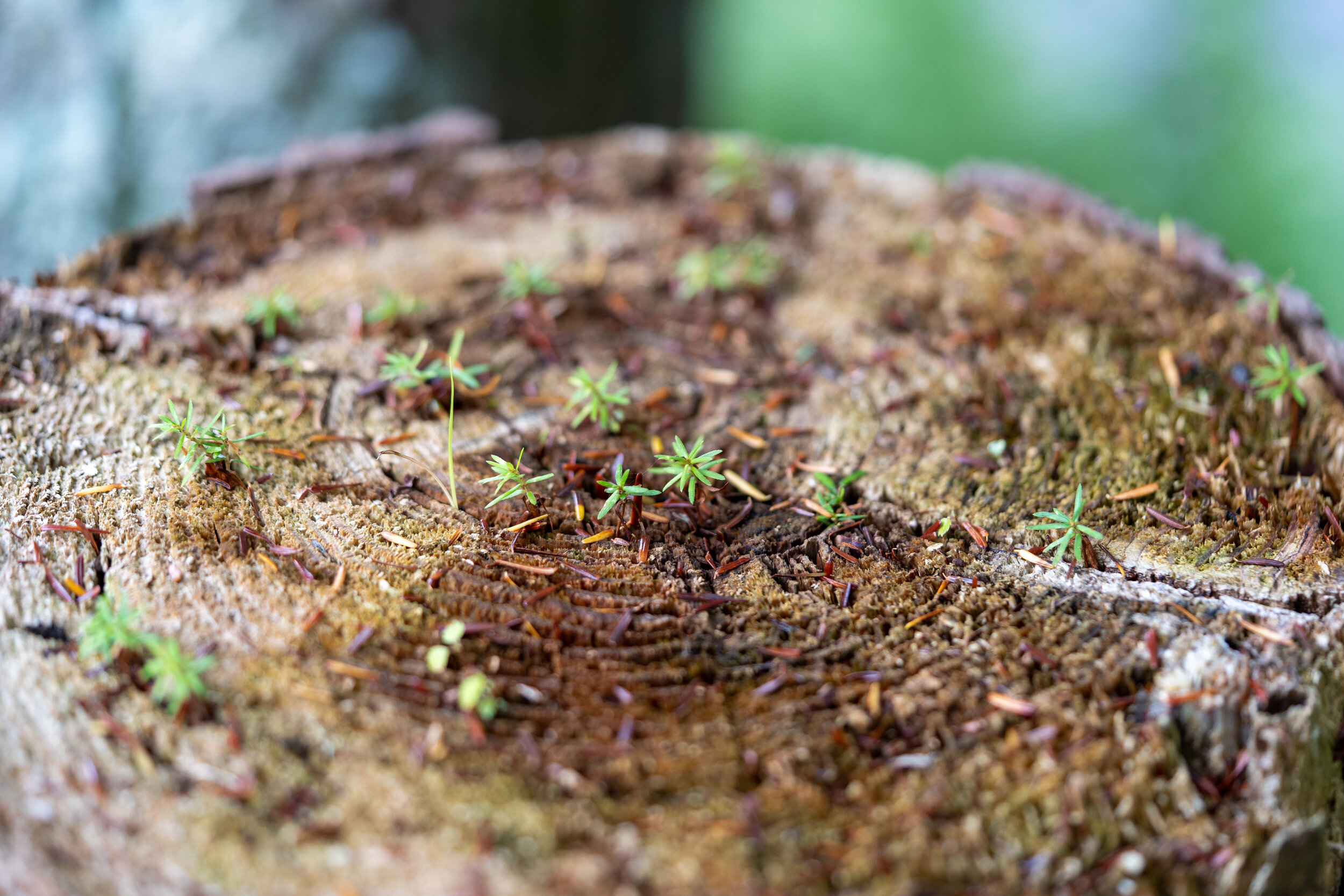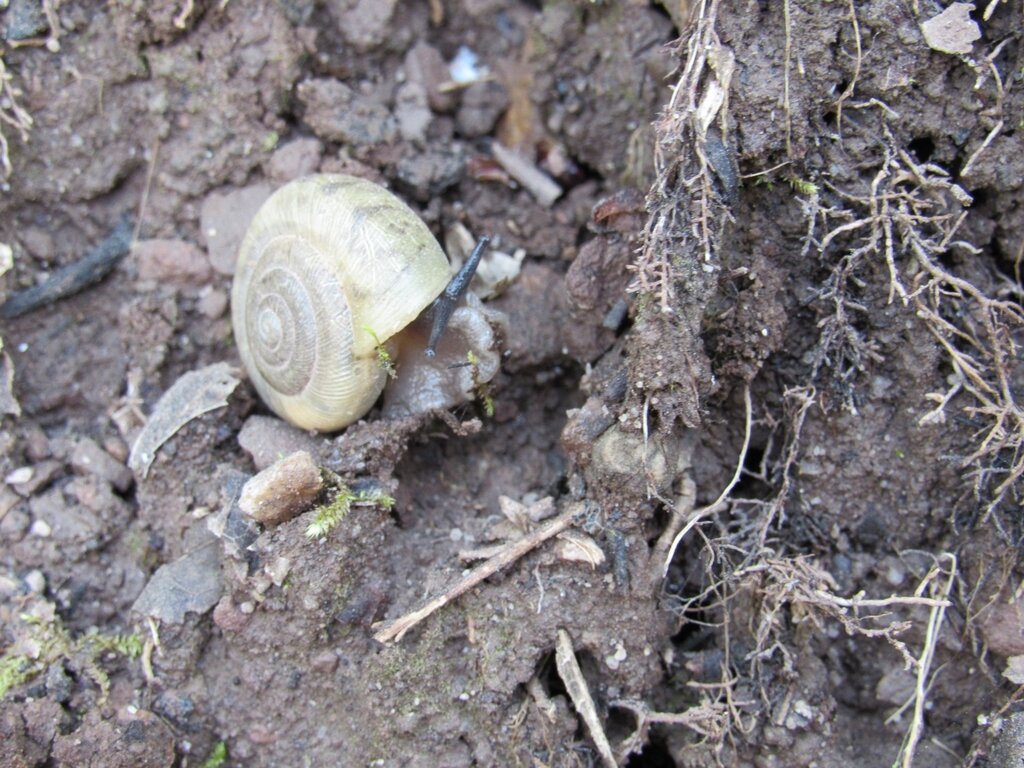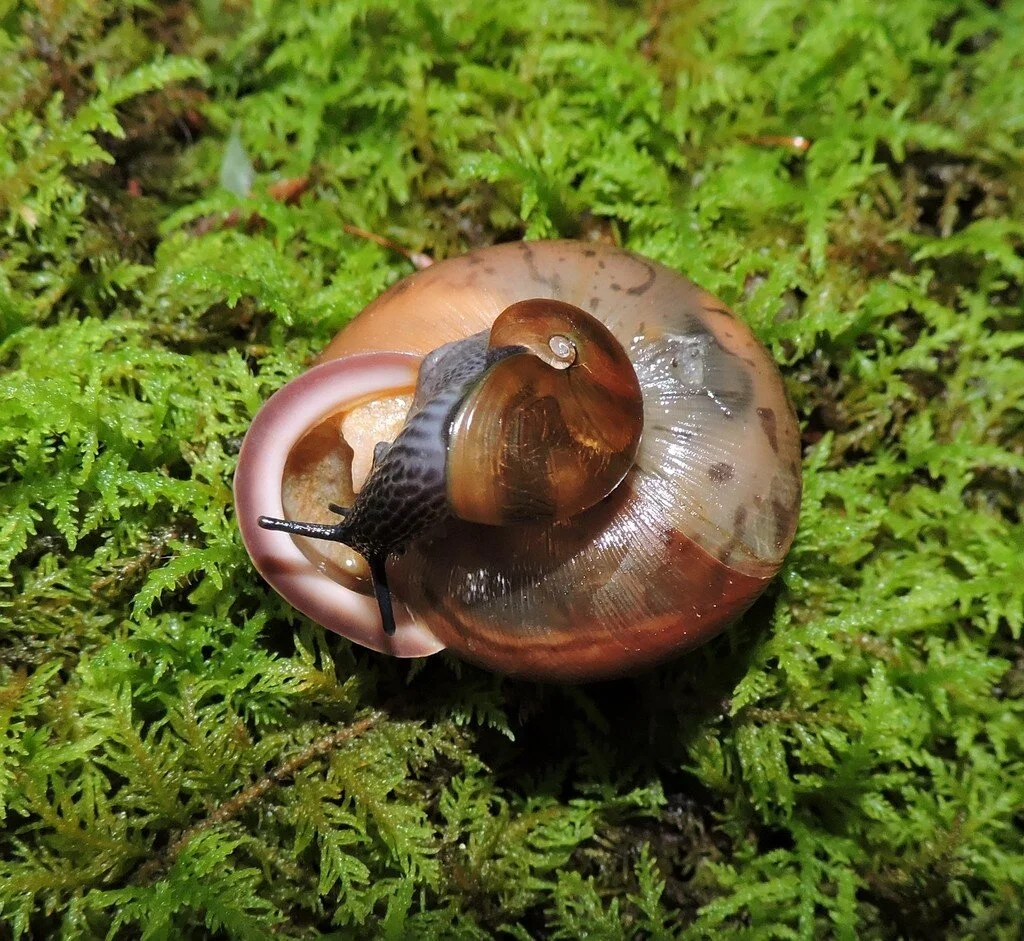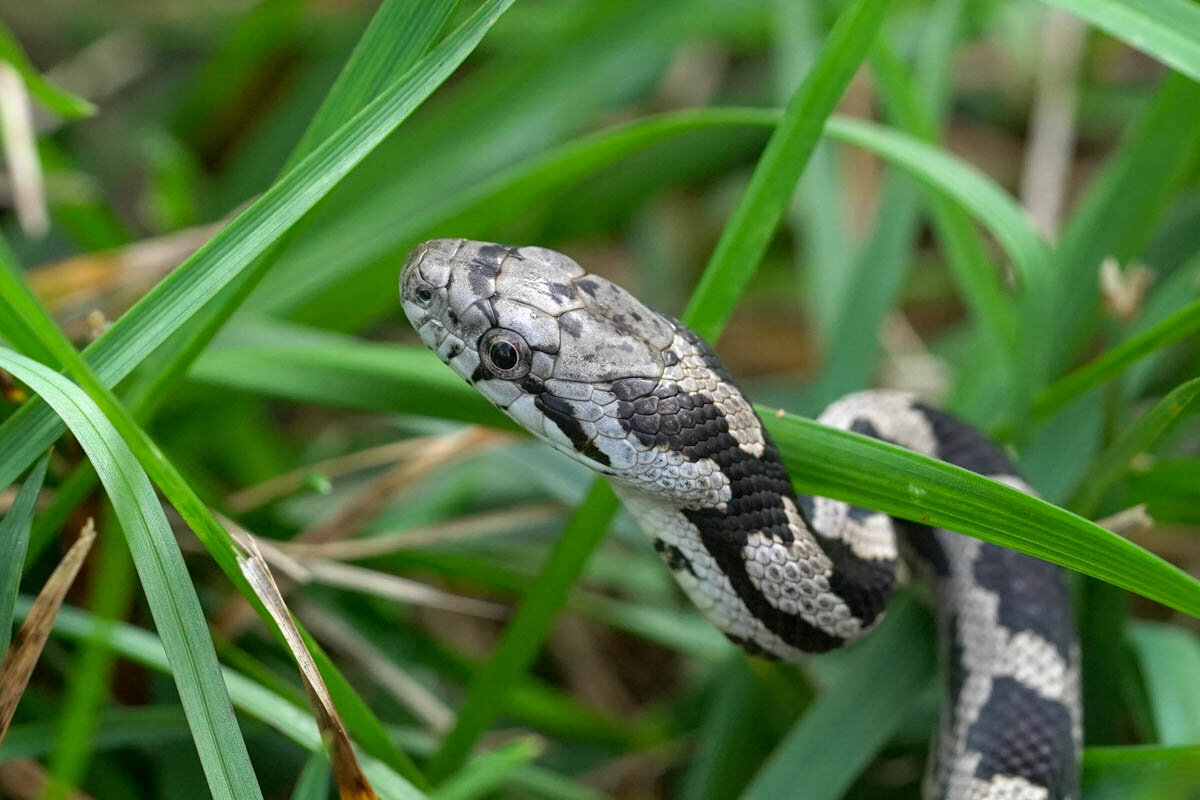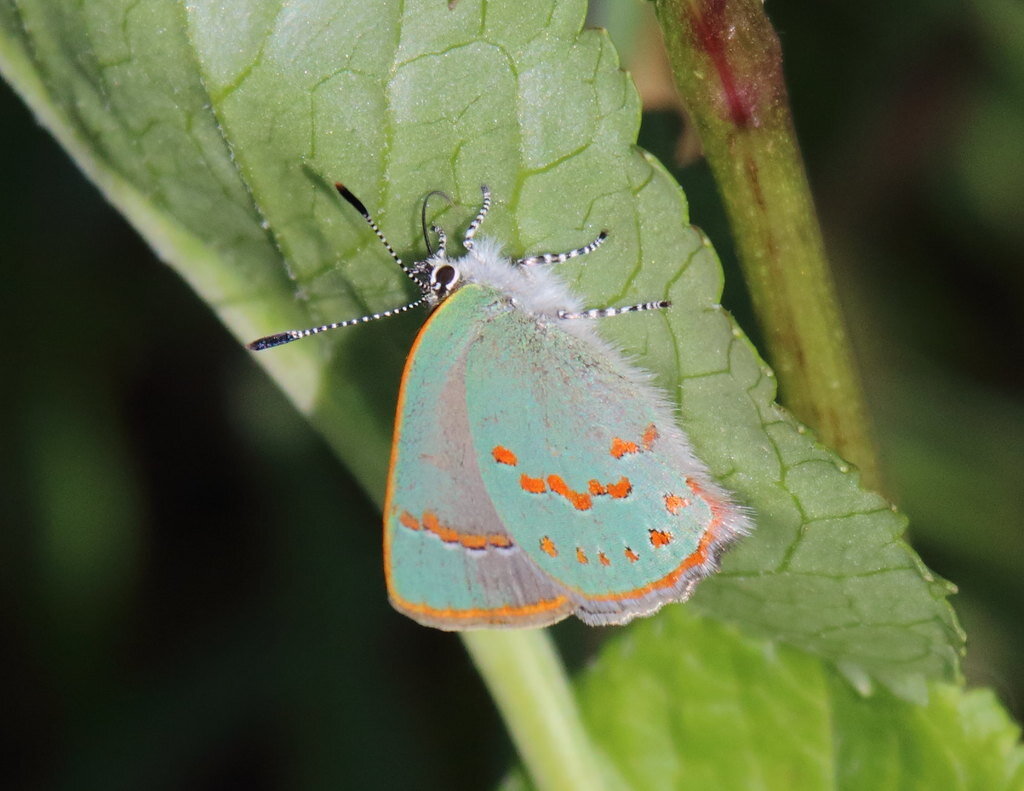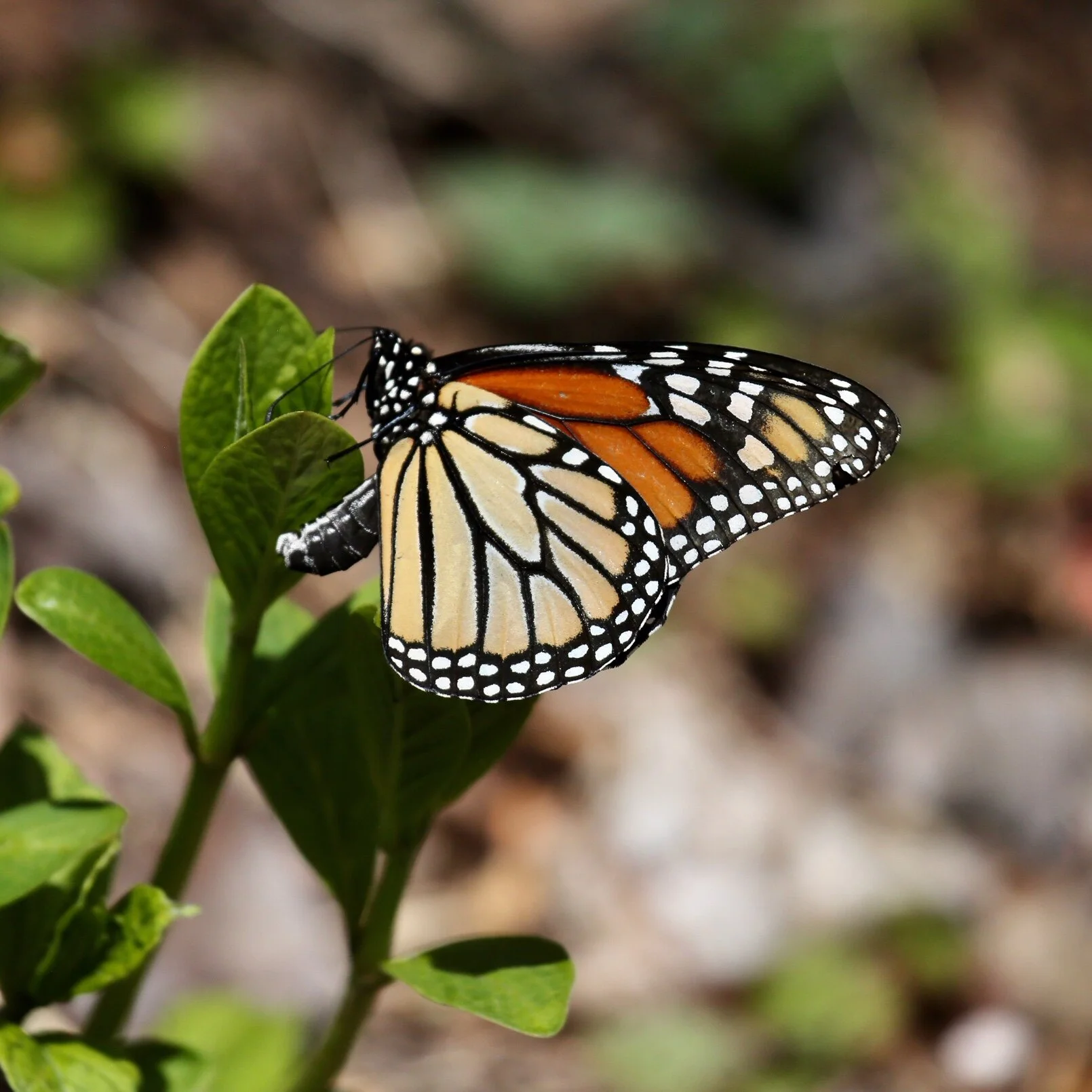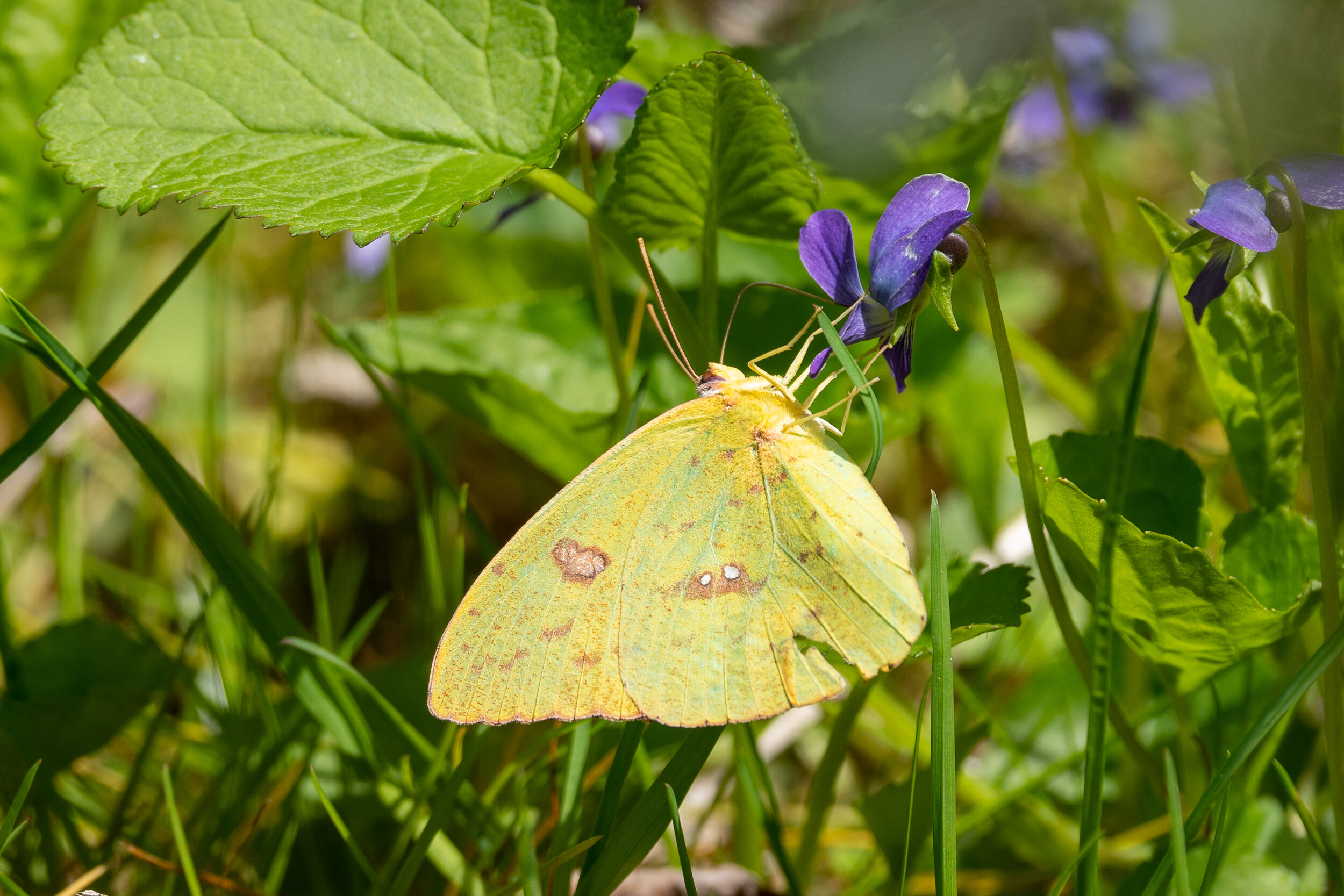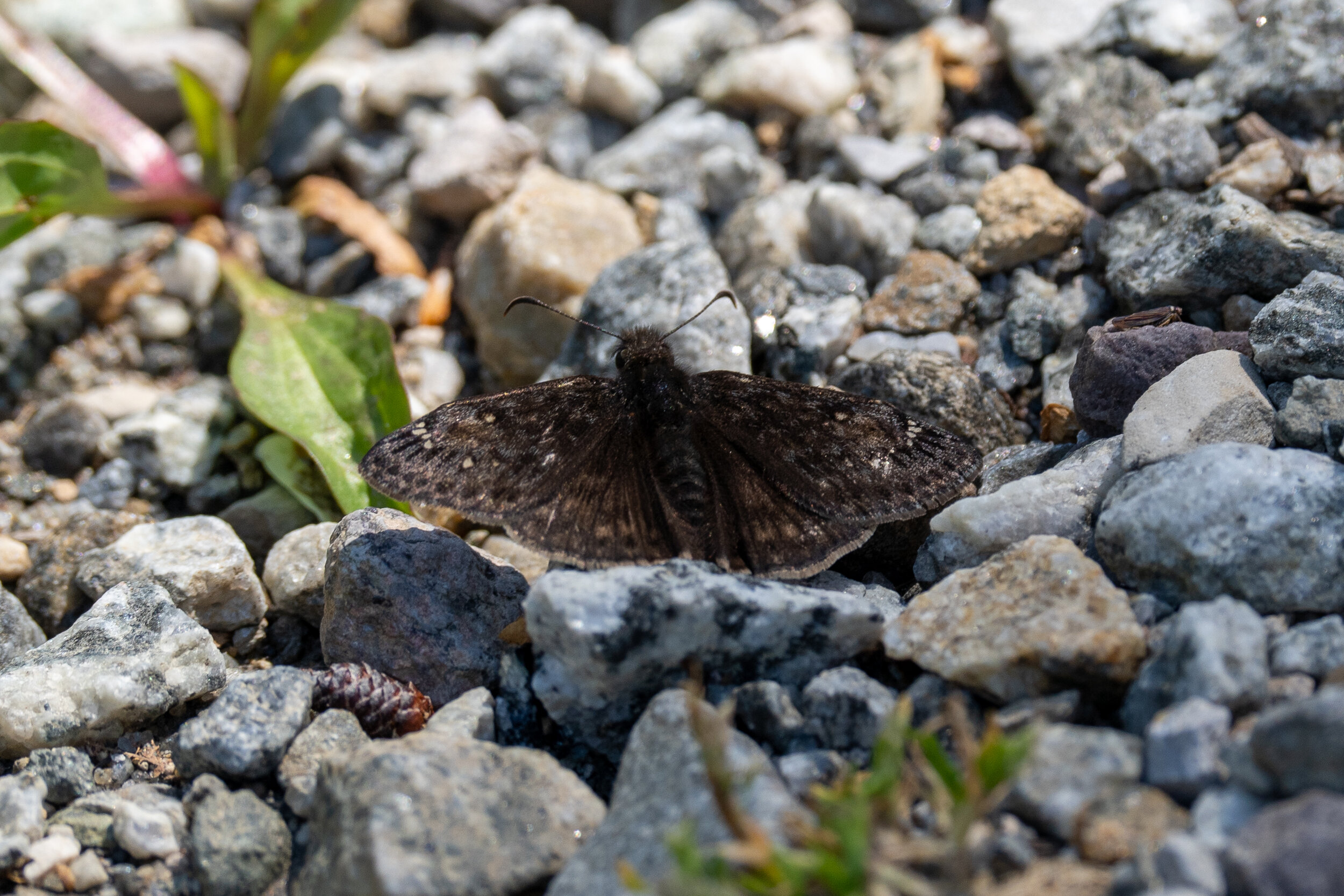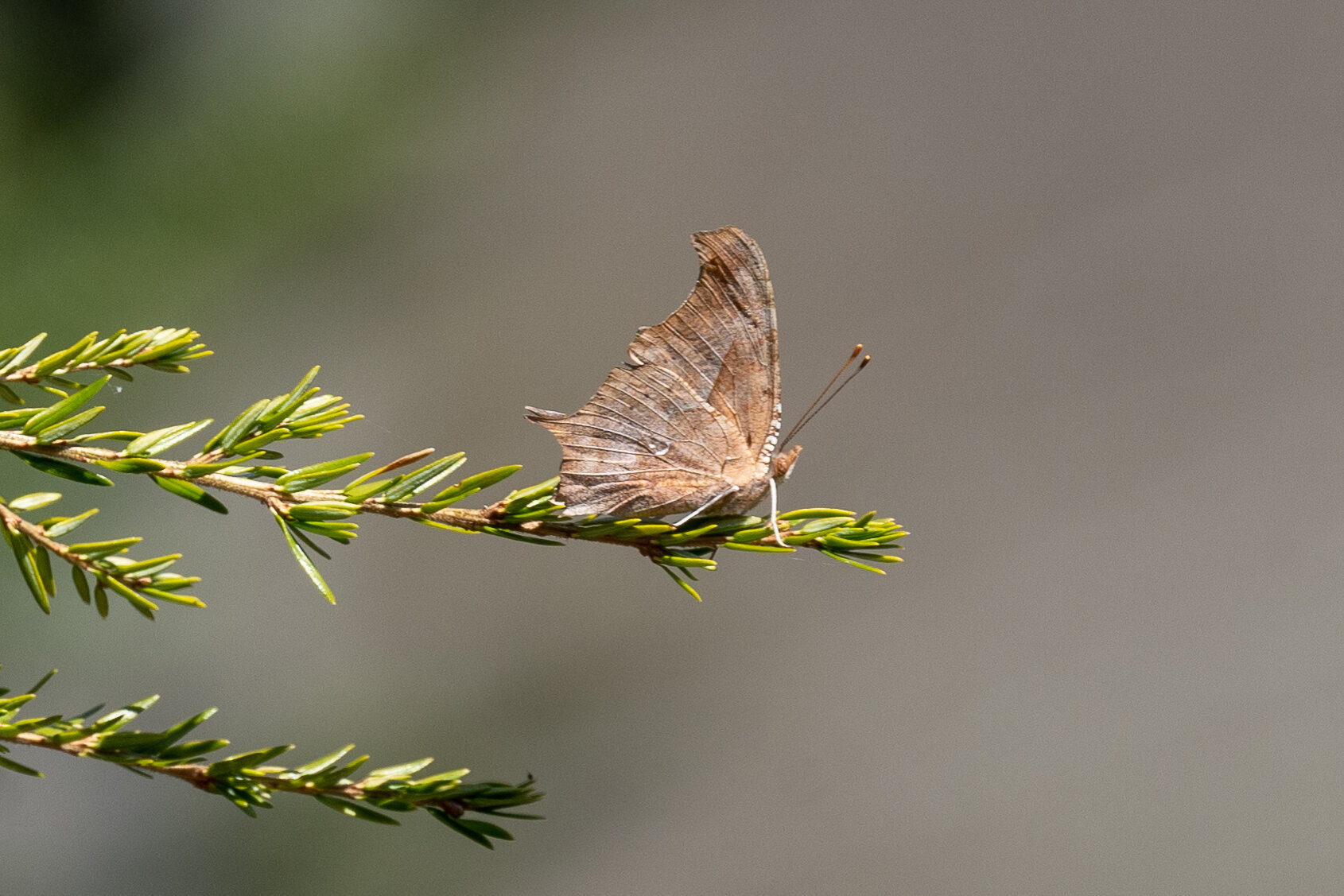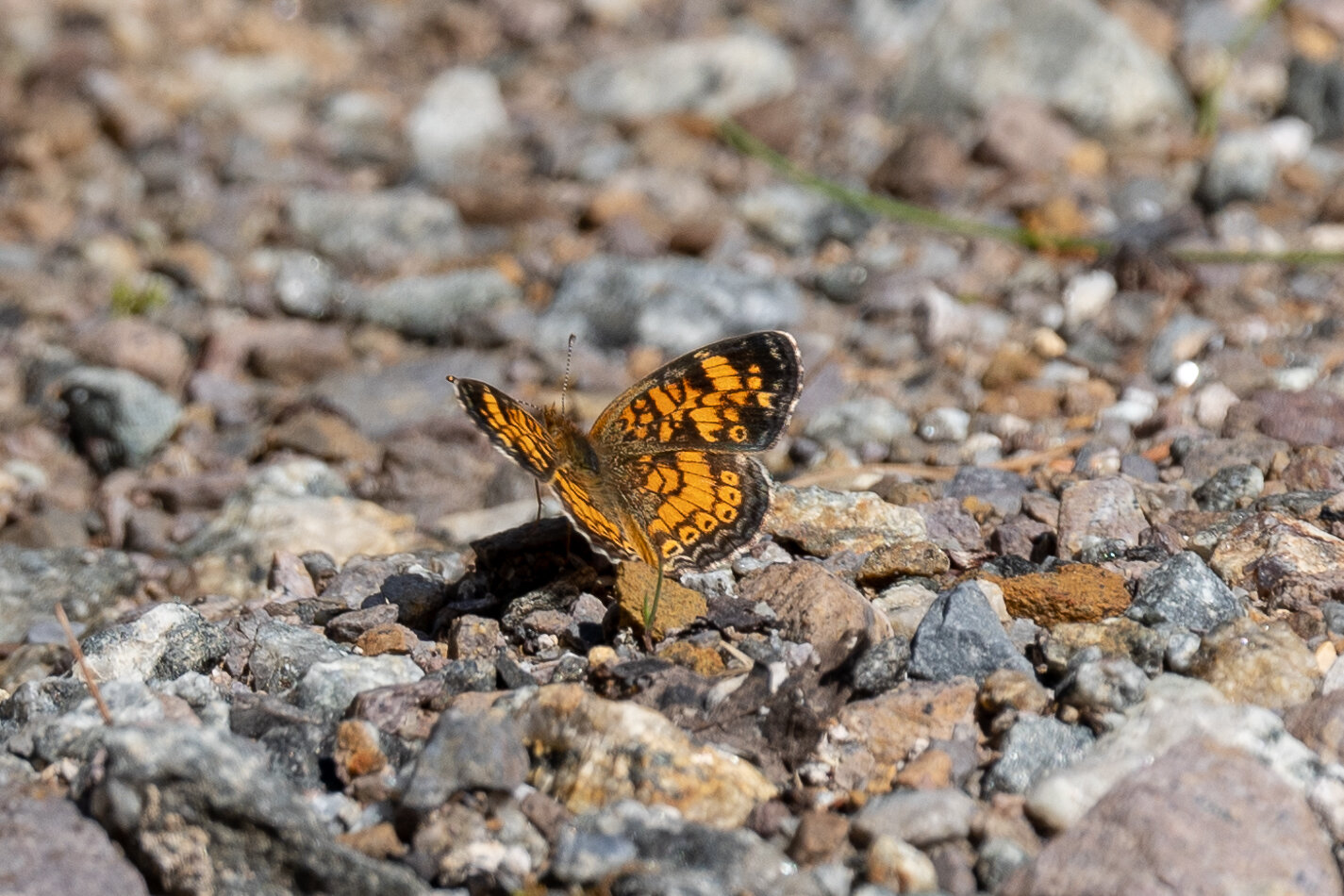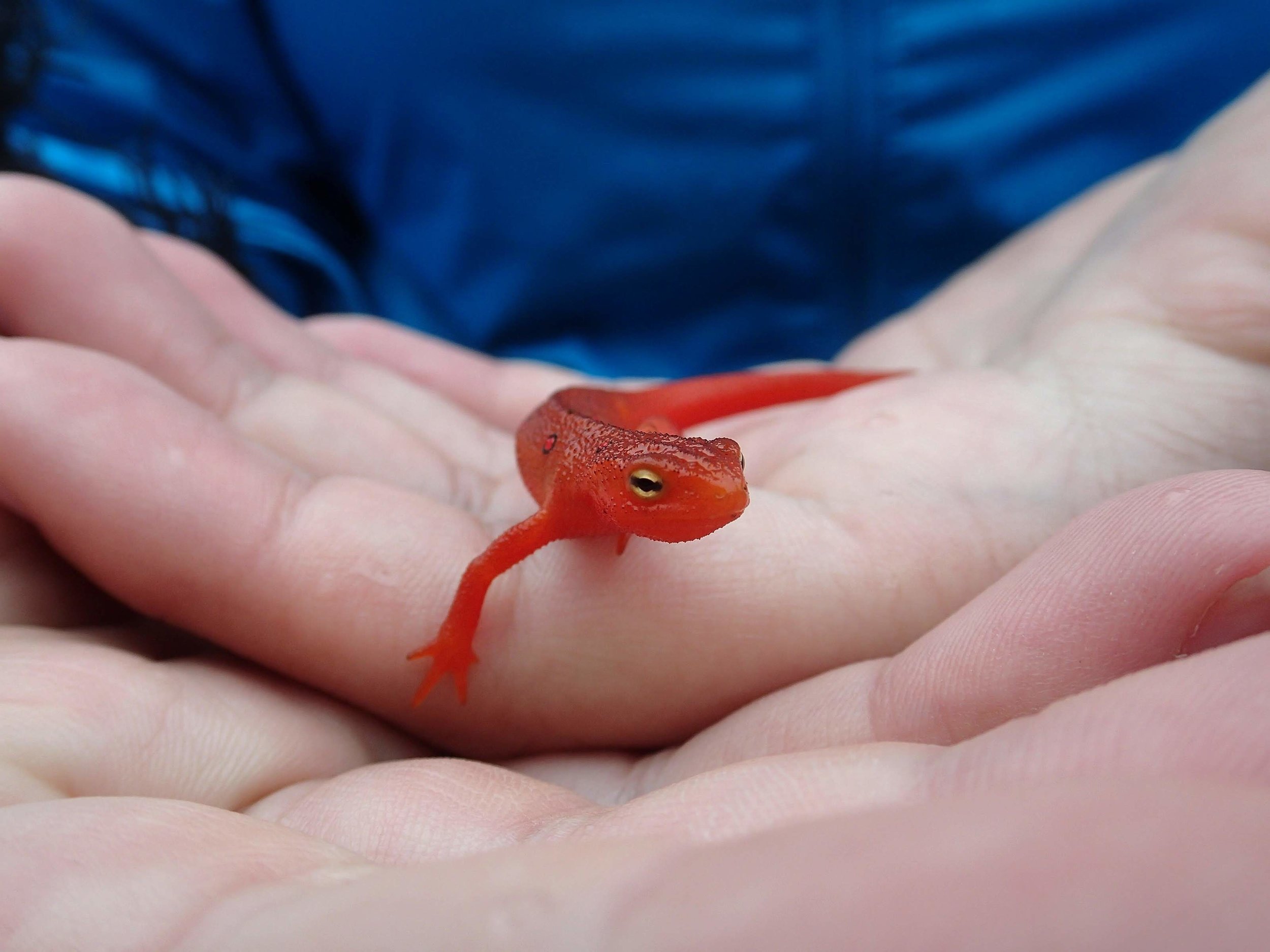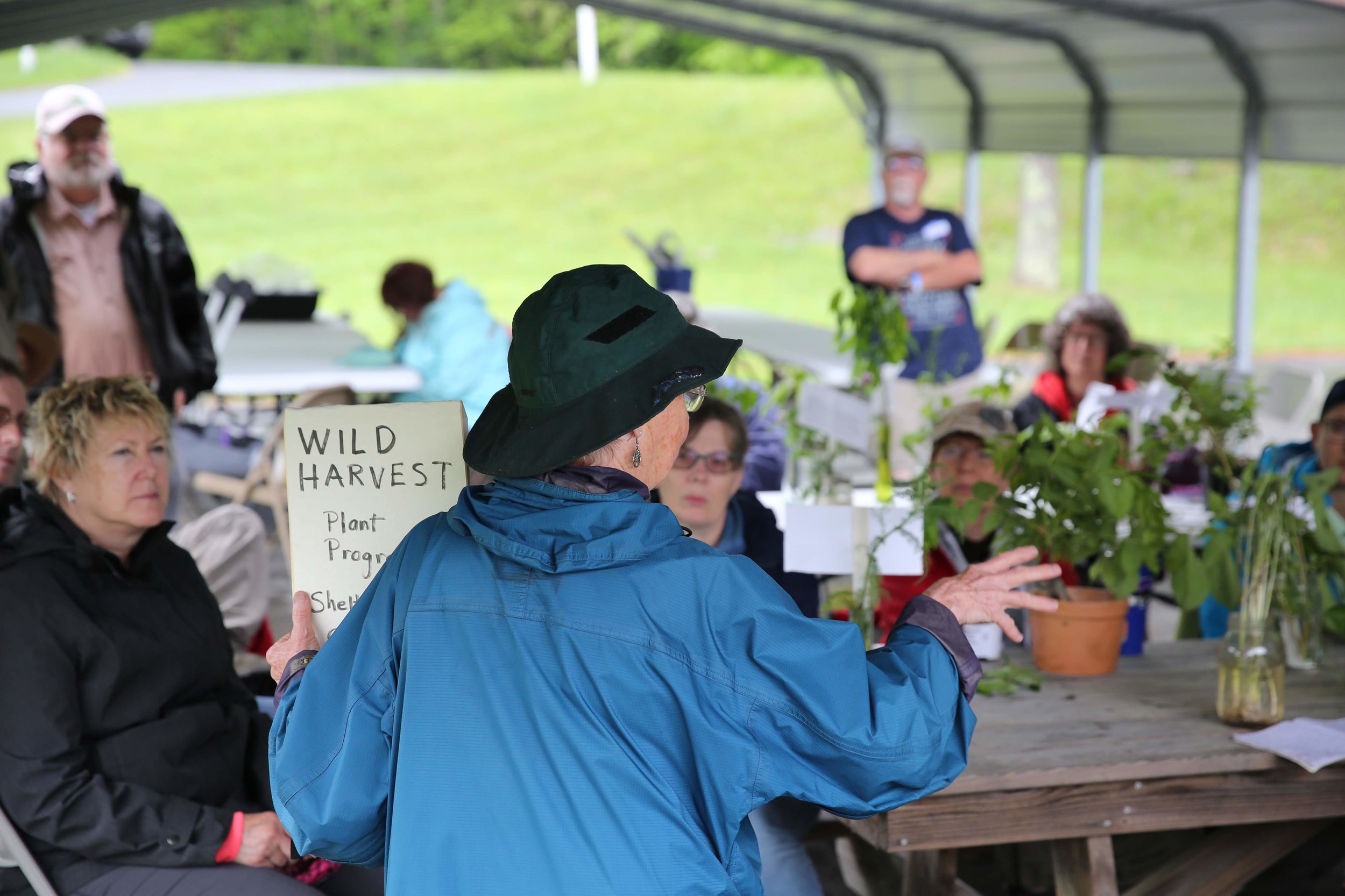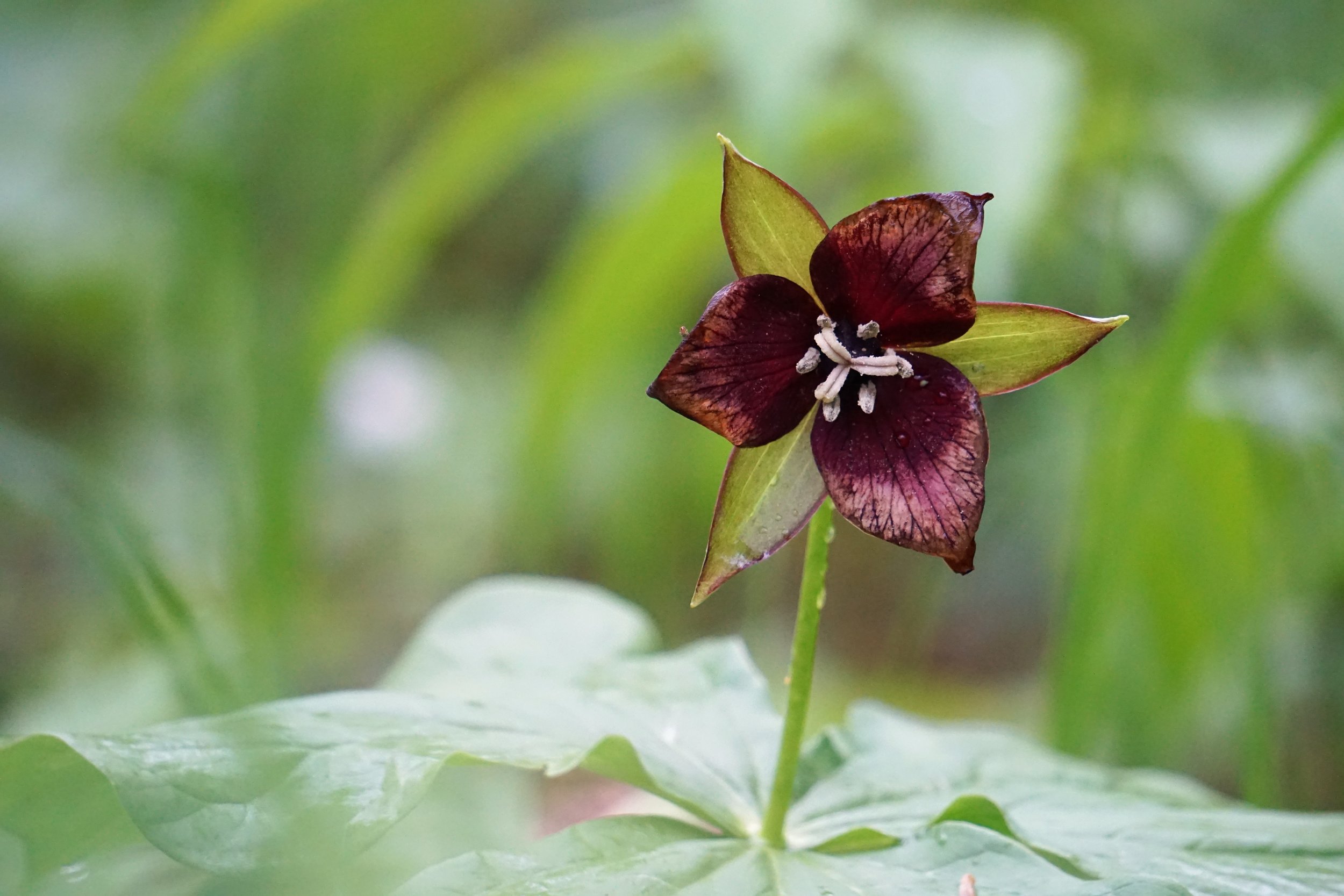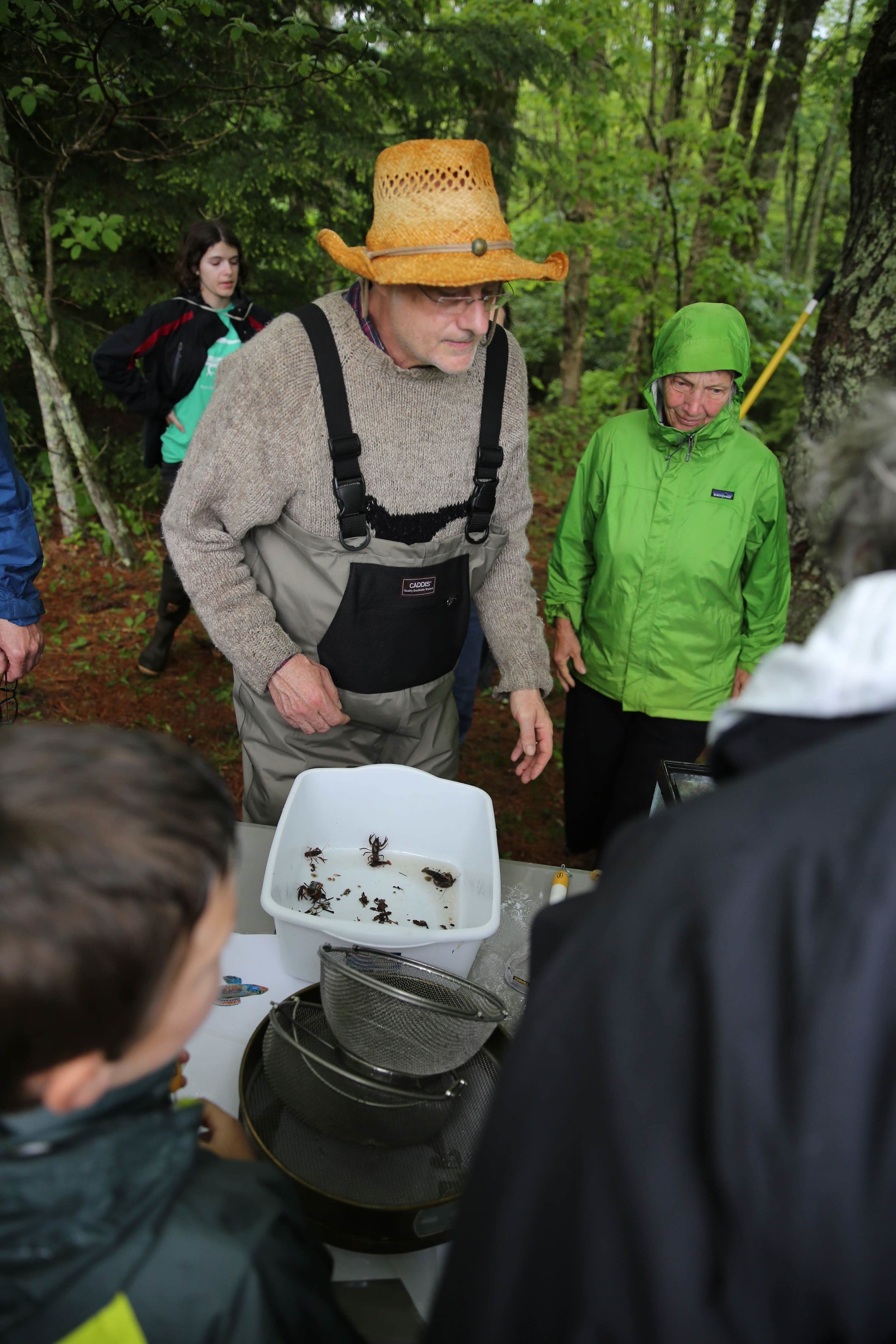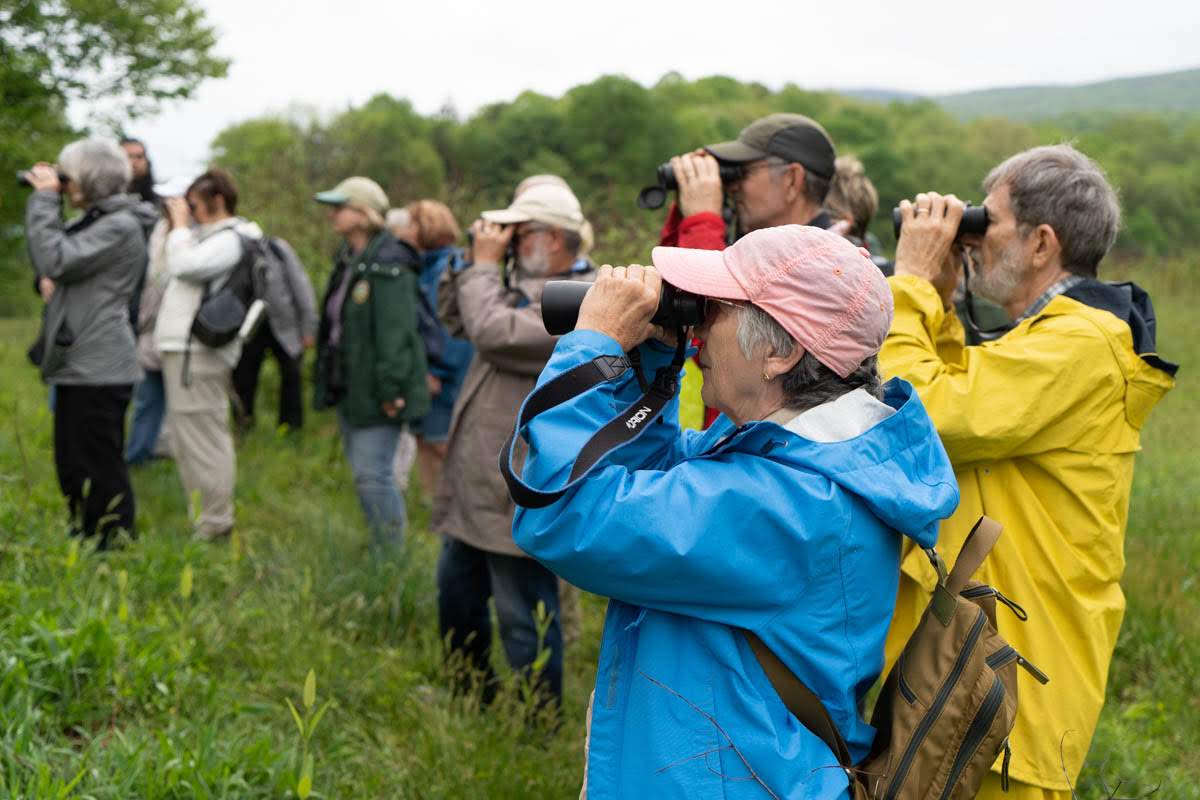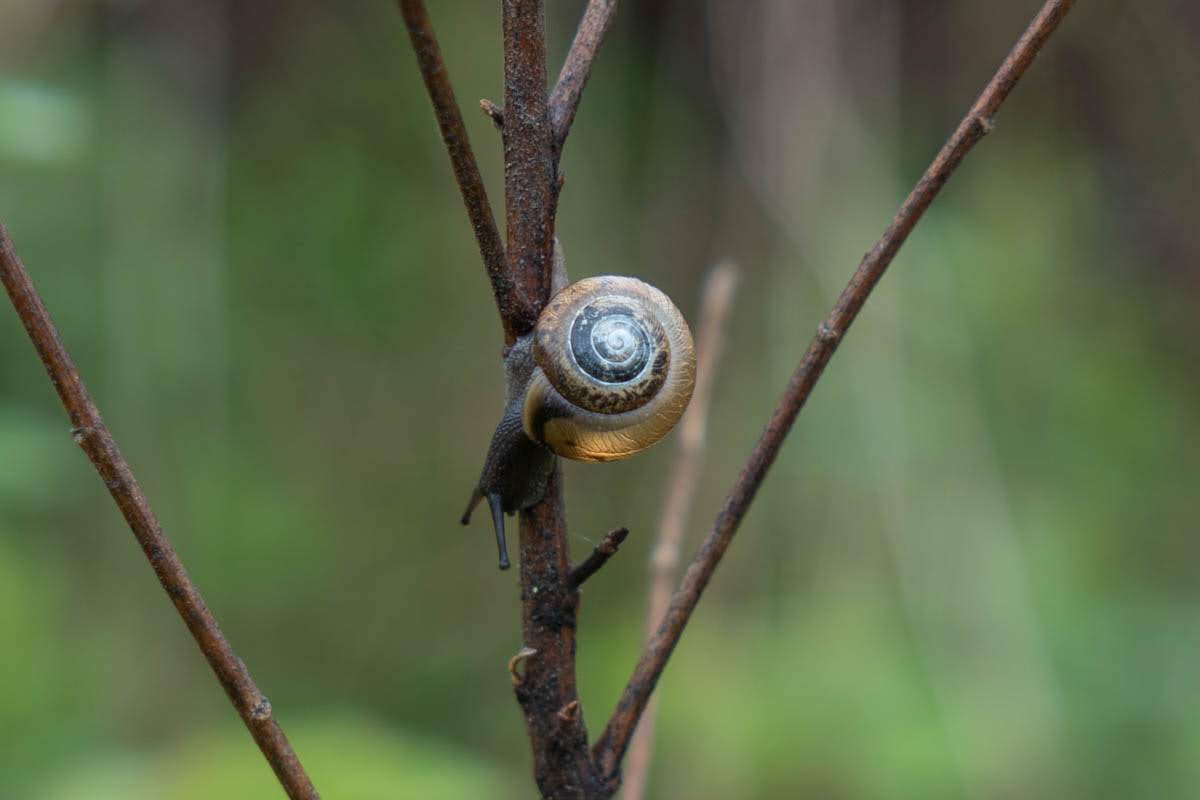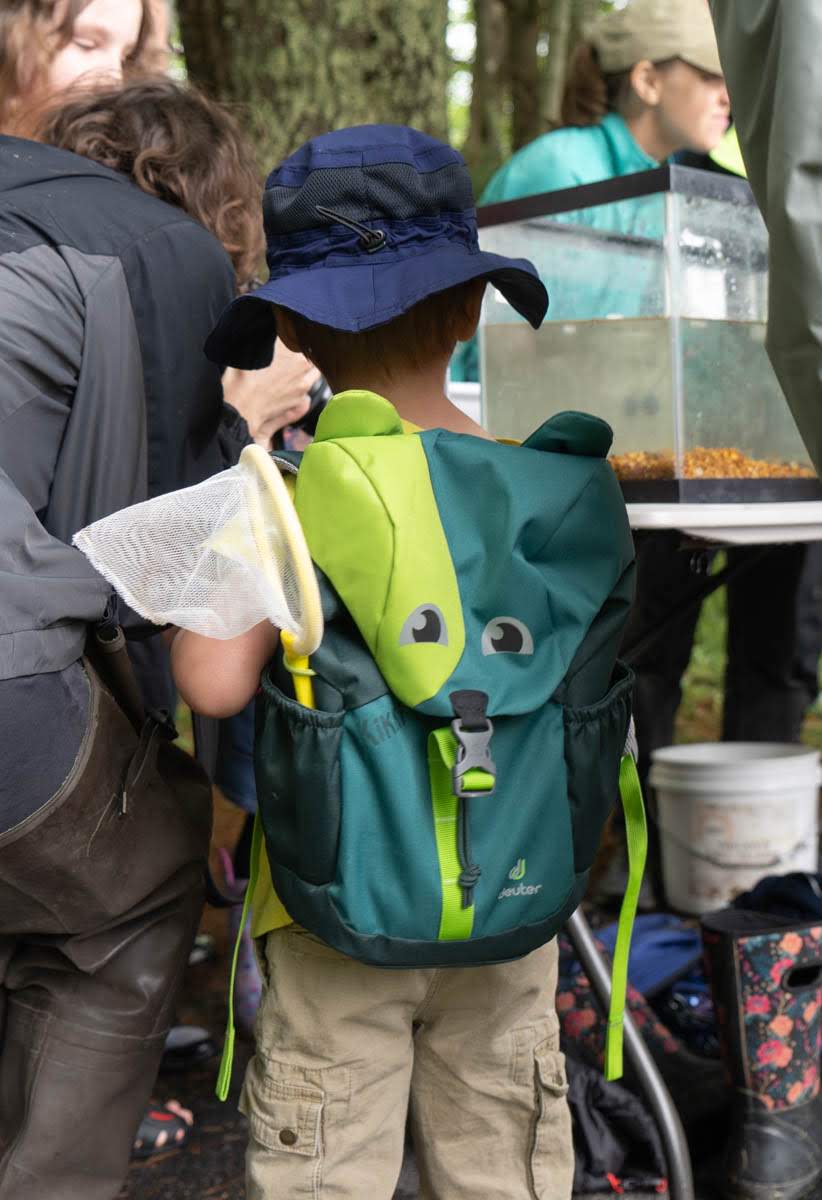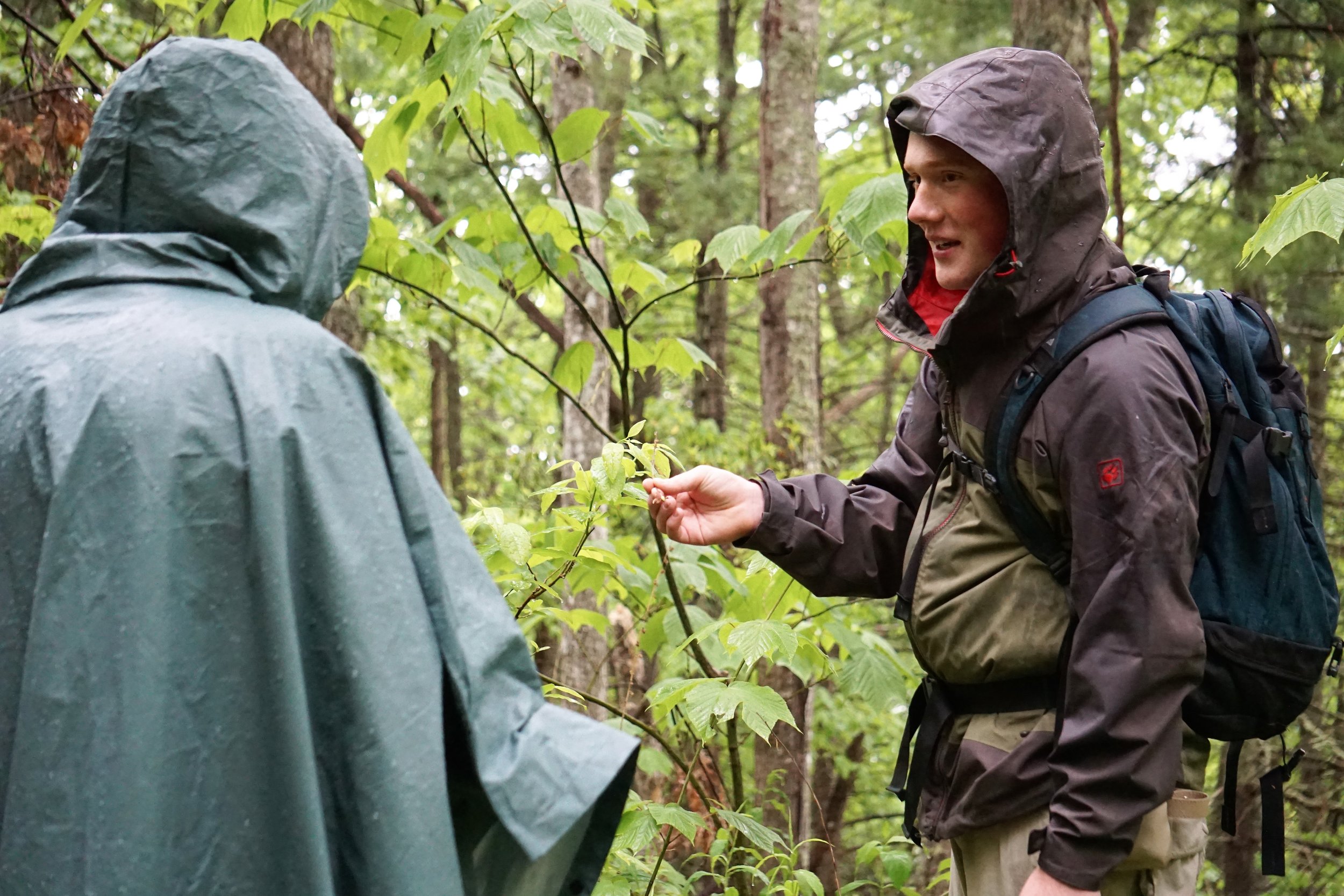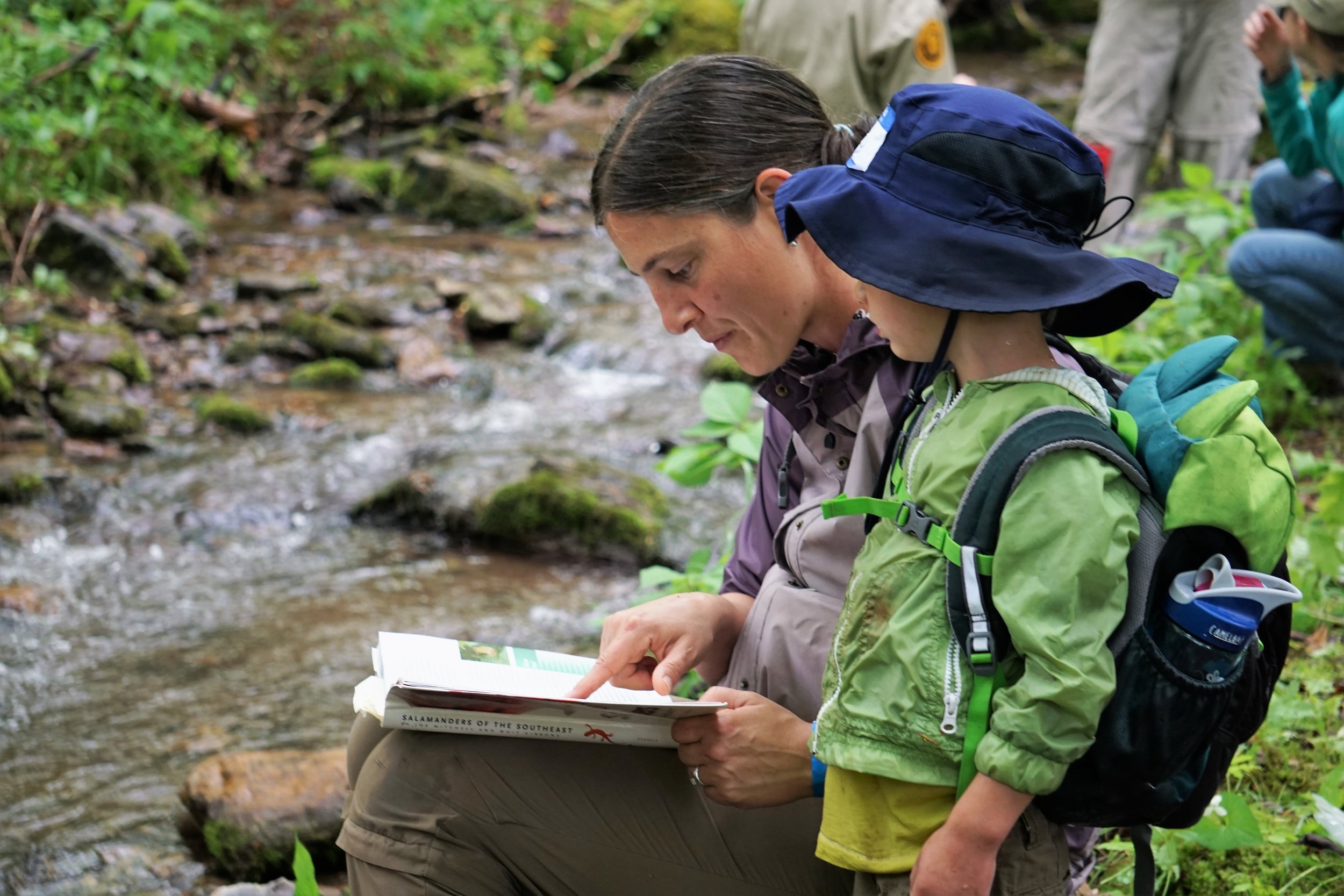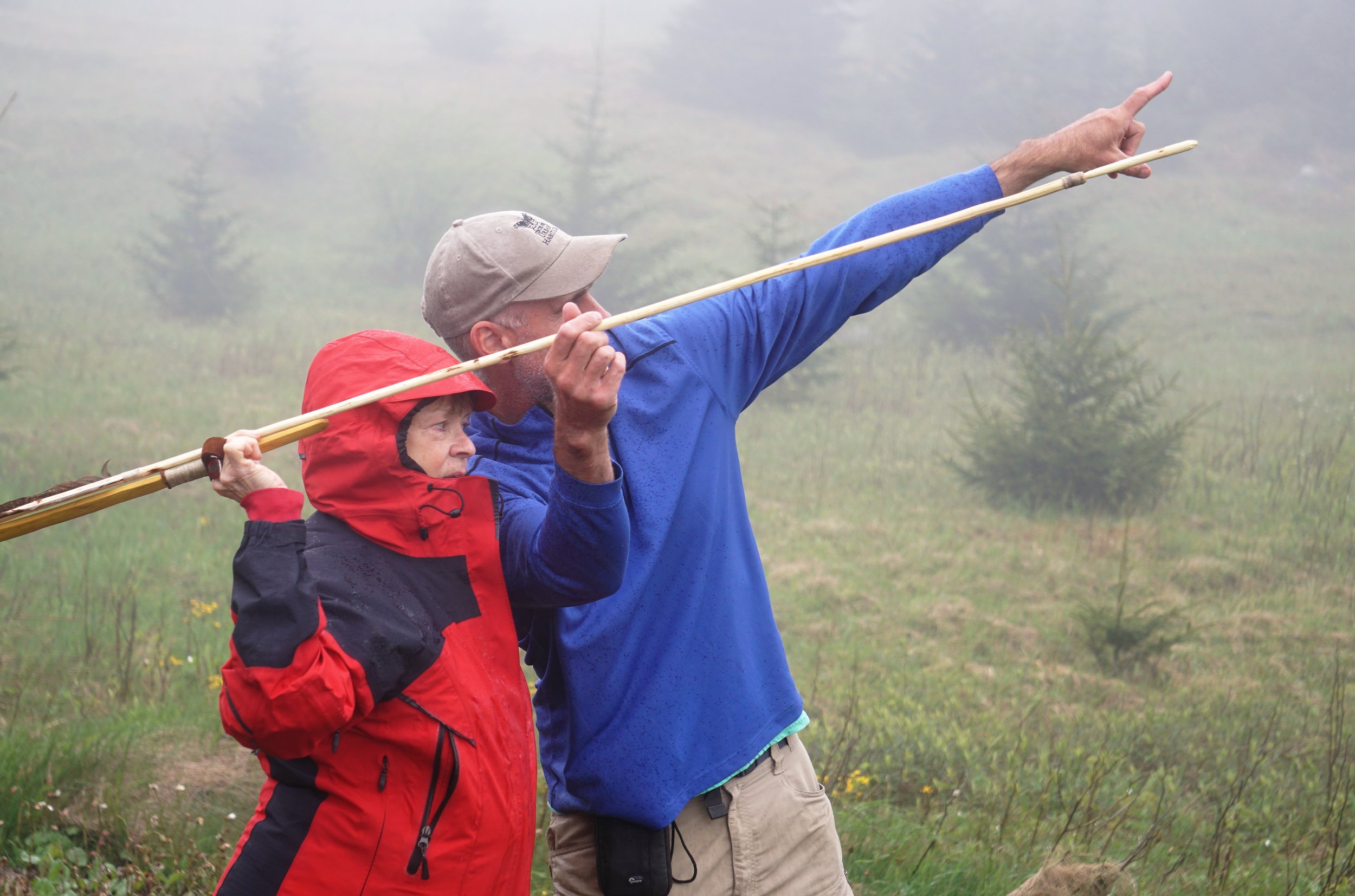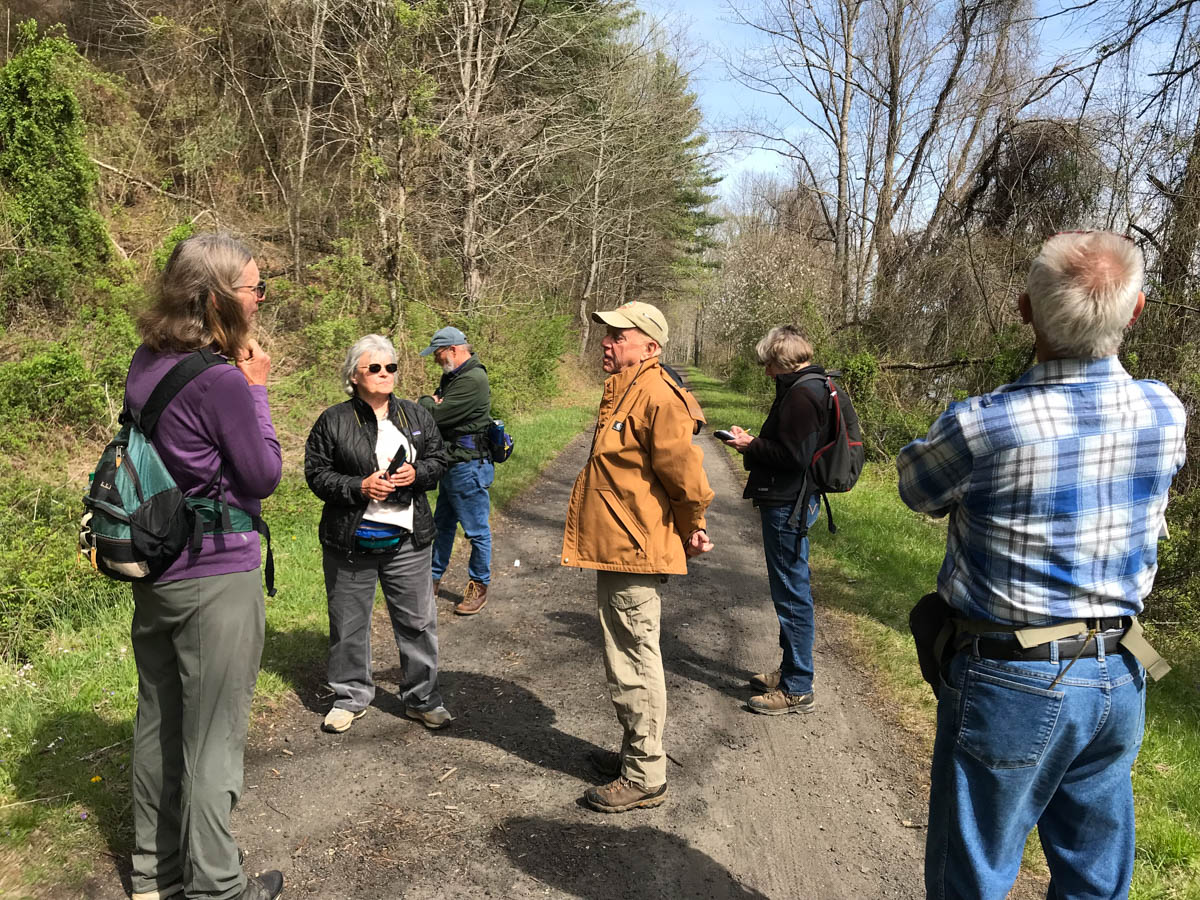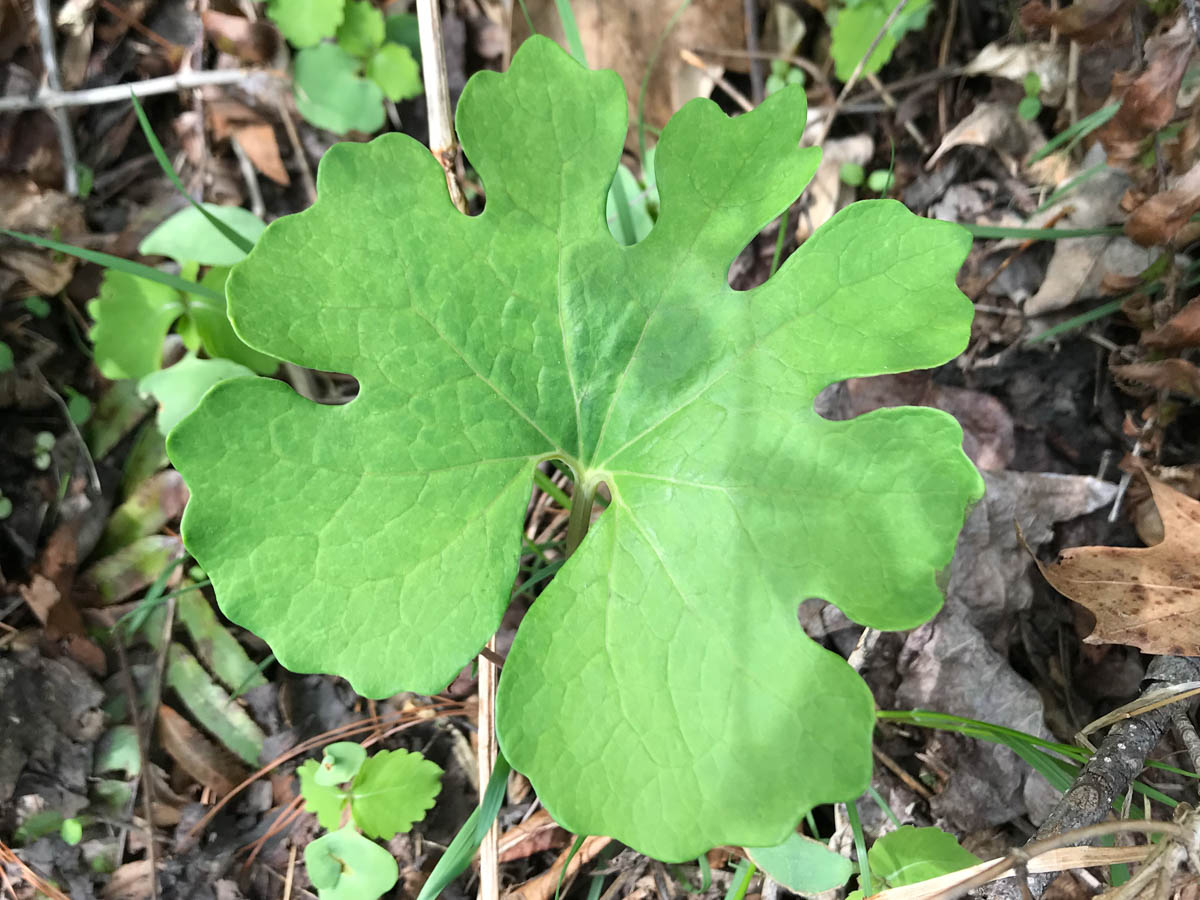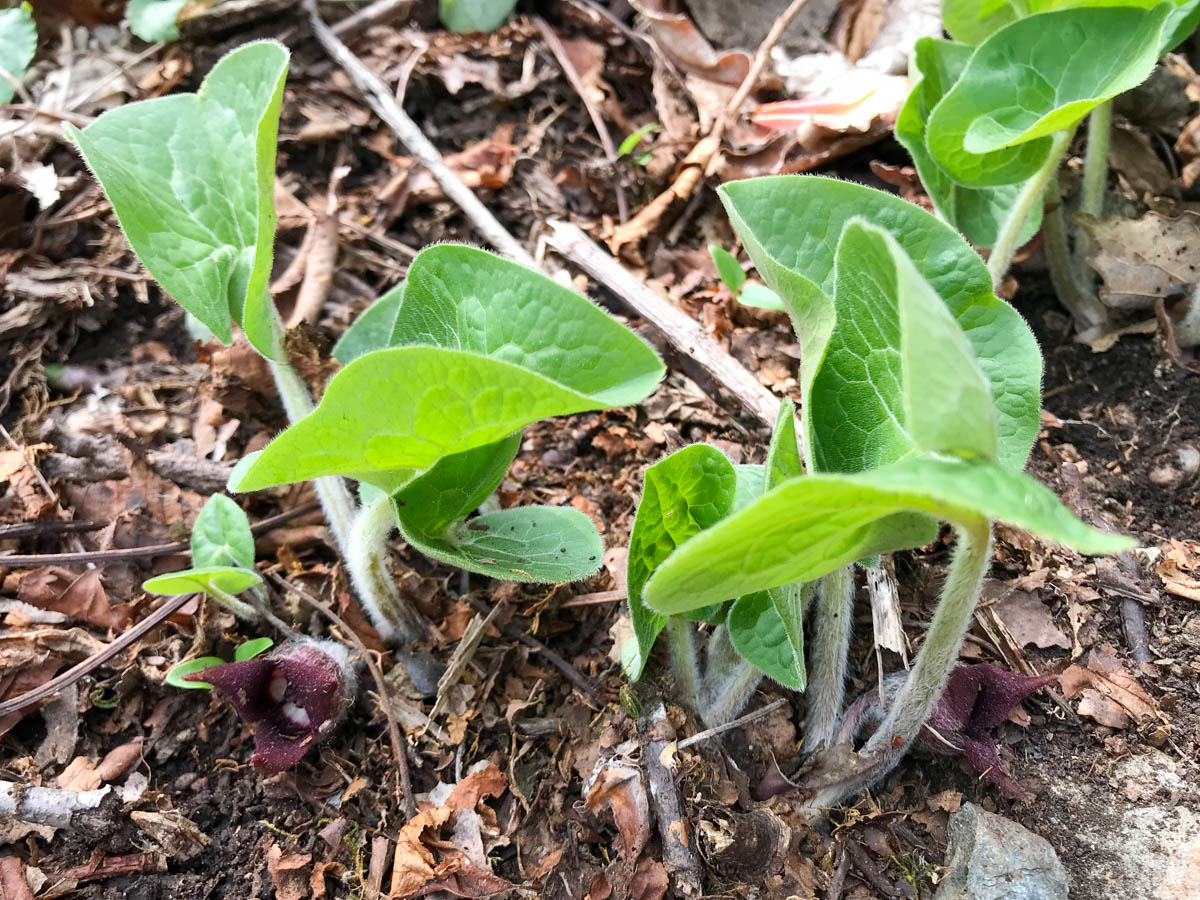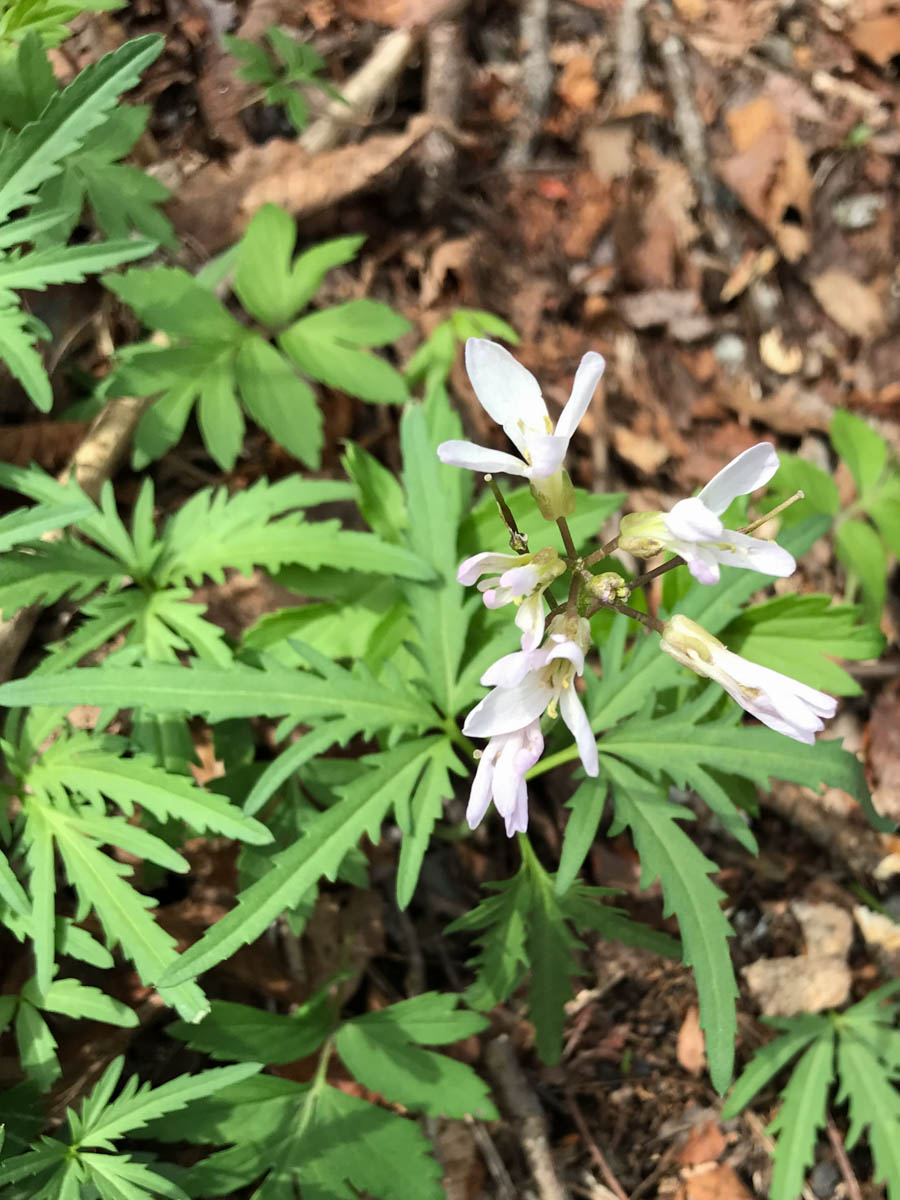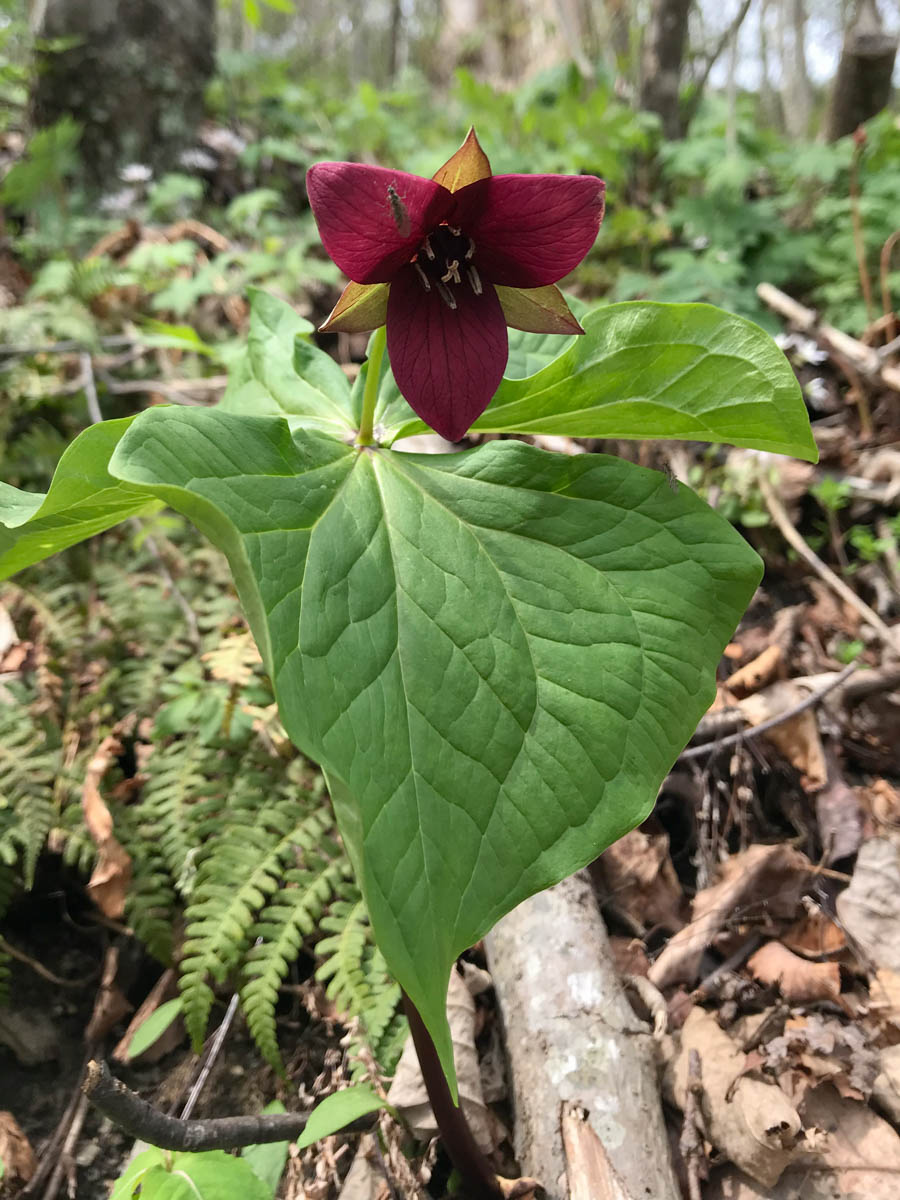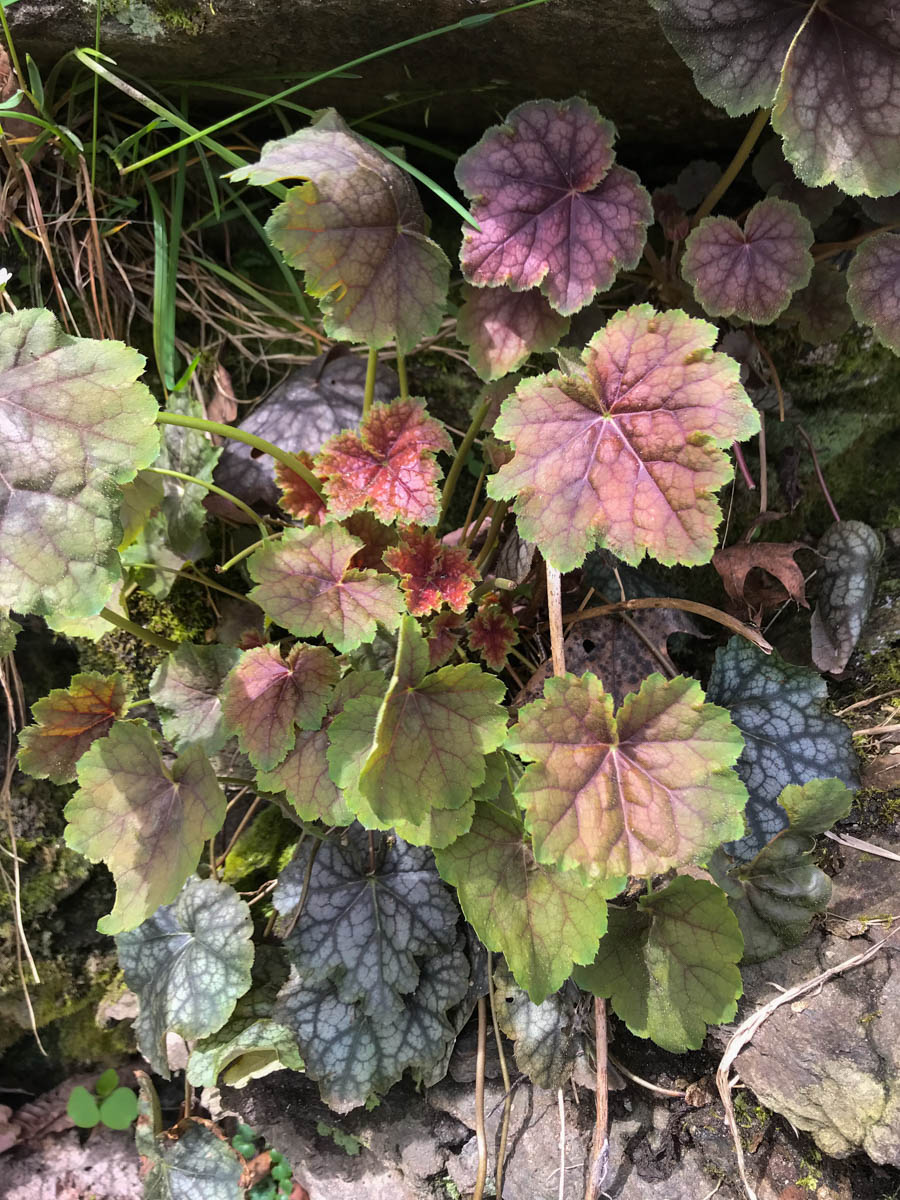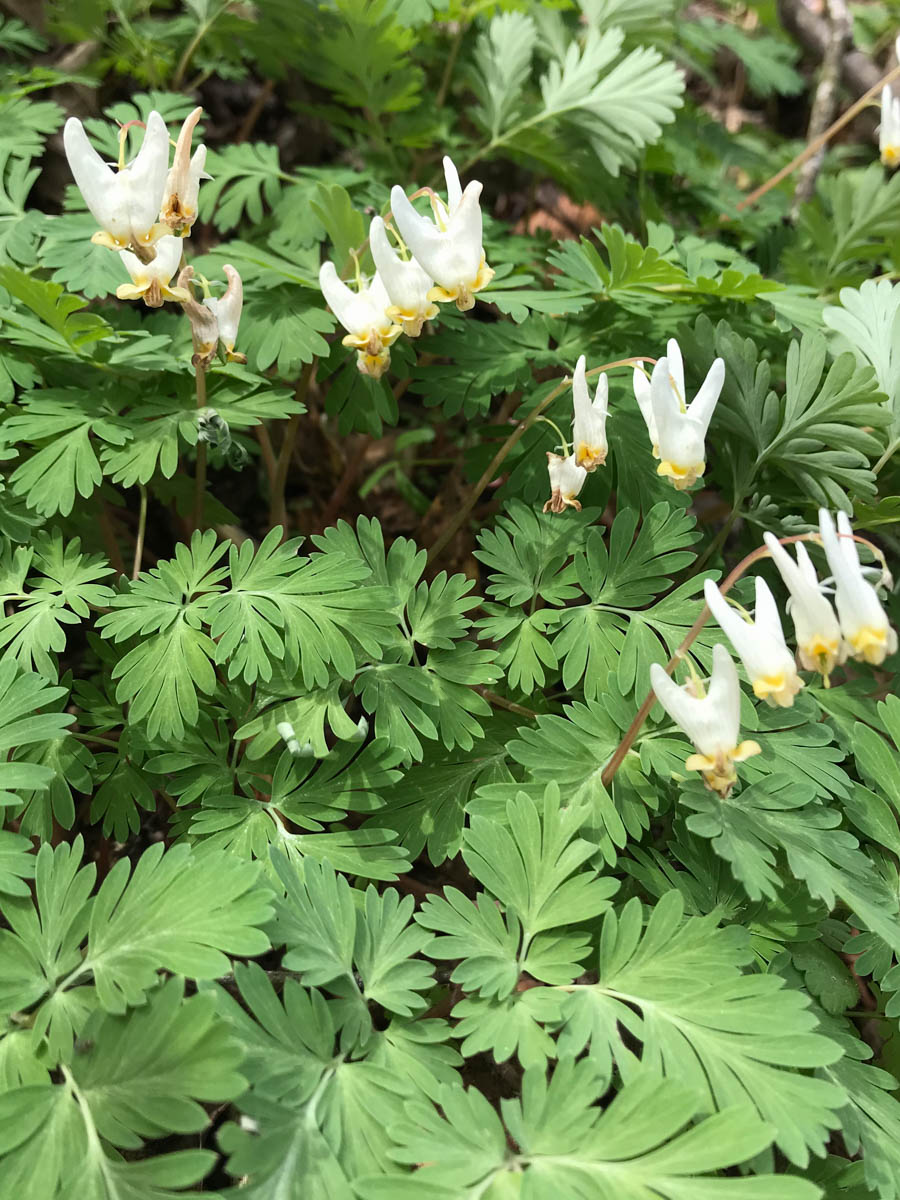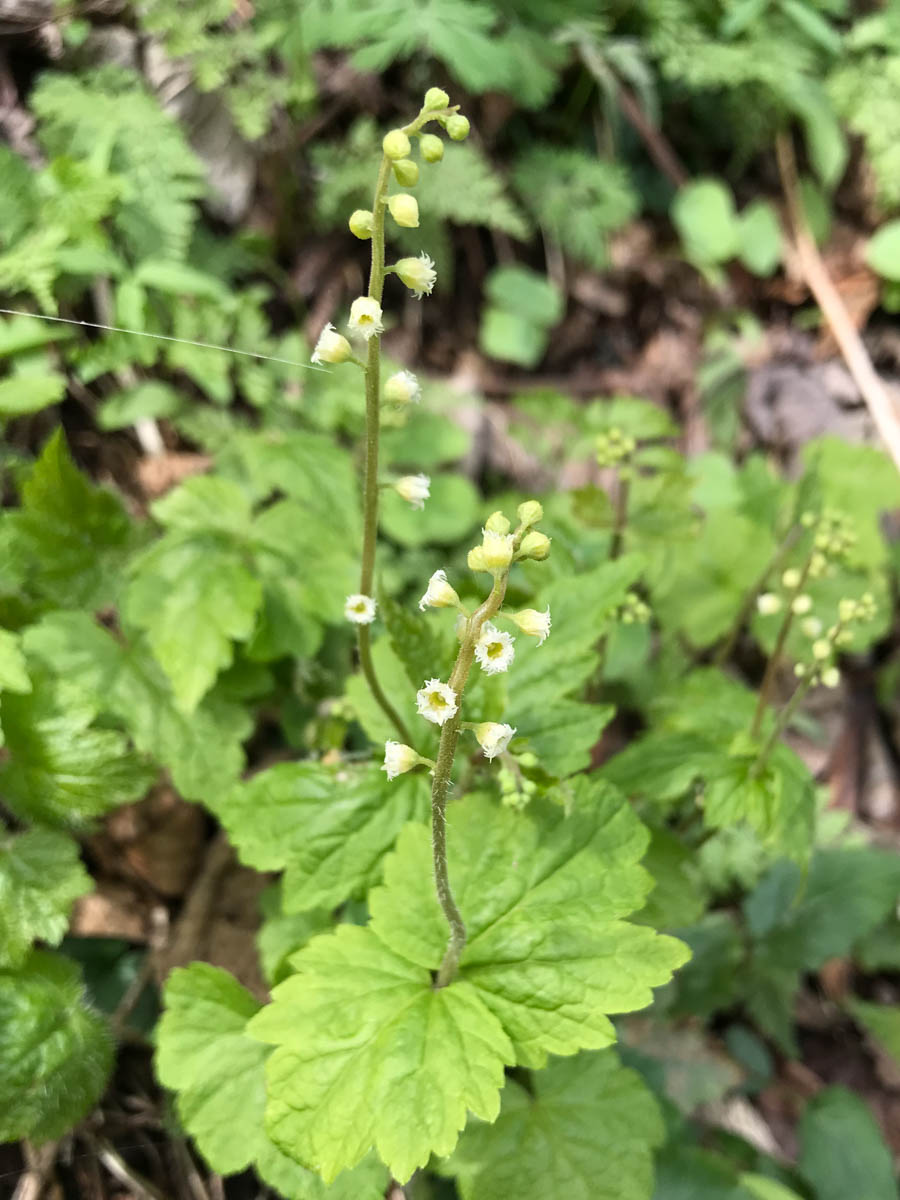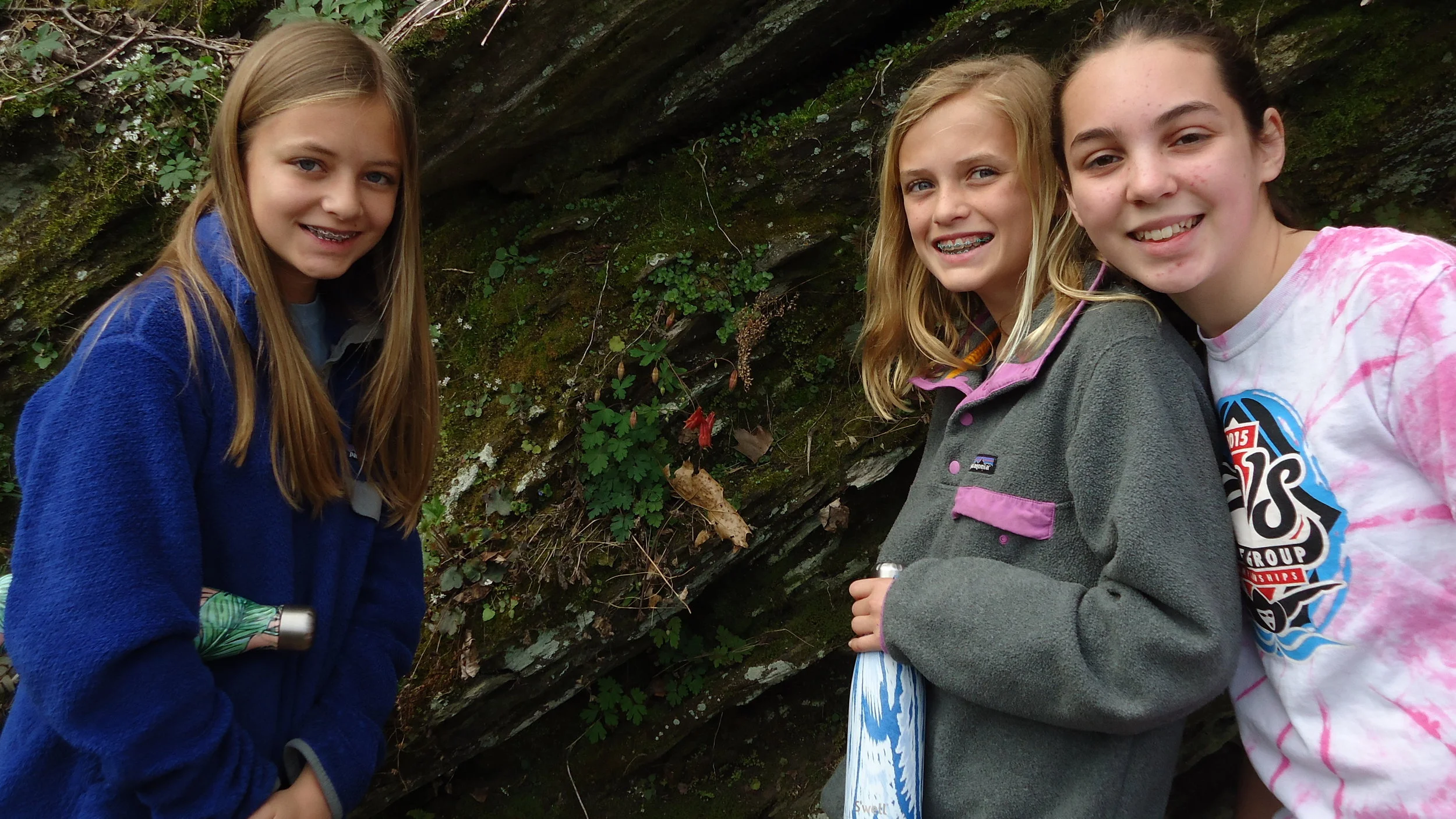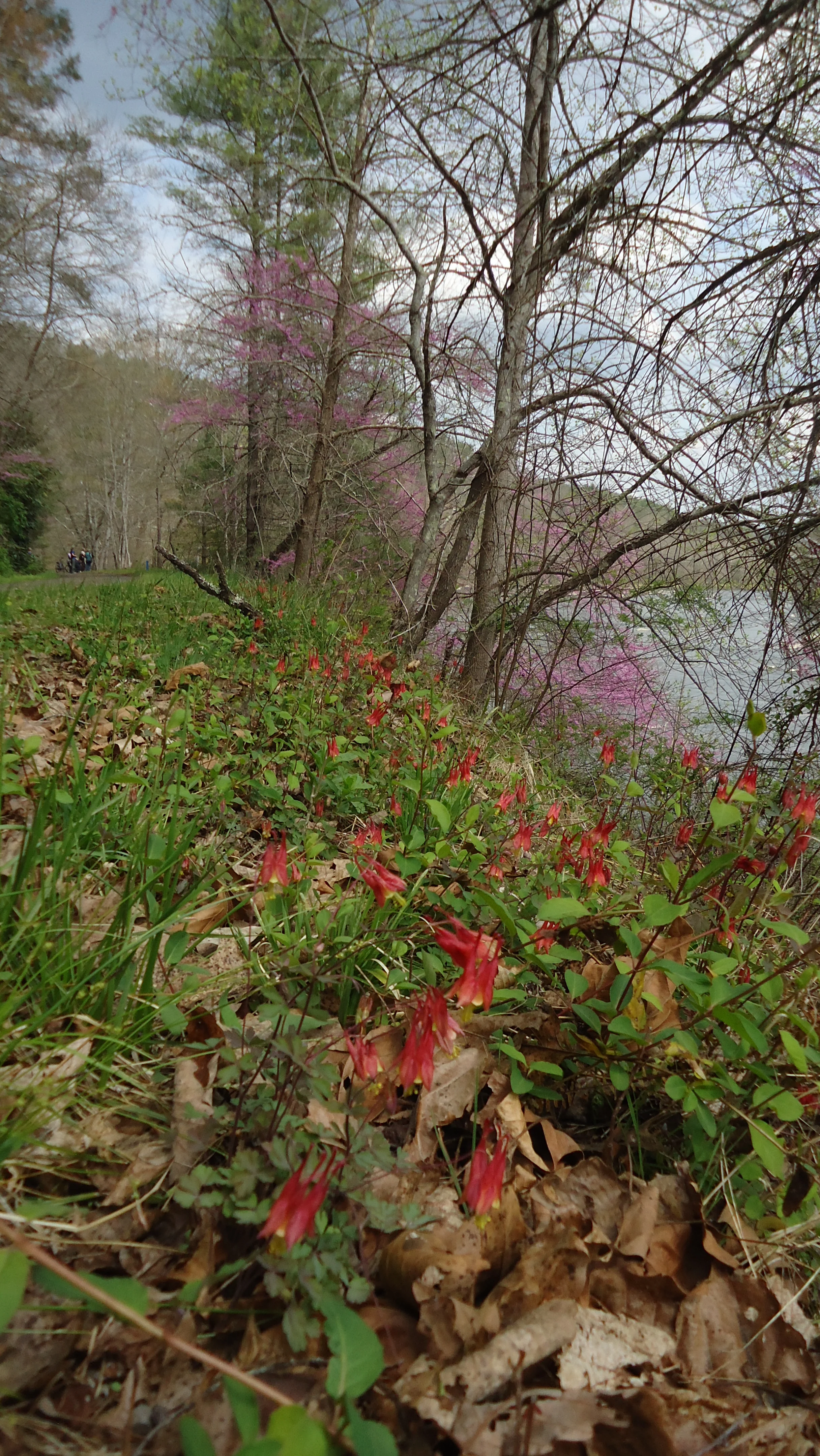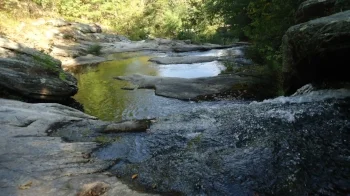
Get Outside on the New River Trail
This Saturdays (February 13th), hike begins at 2:00 pm. Activities include a scavenger hunt and the chance to earn a BRDC patch.
Blue Ridge Discovery Center’s Get Outside Program connects families to nature through hands-on, active, outdoor natural history activities. This program includes observational hiking, an outdoor activity, and natural history education. Participants will get outside with their families to explore, discover, and share their experiences during a short hike along New River Trail in Galax, Va.
This Saturdays (February 13th), hike begins at 2:00 pm. Activities include a scavenger hunt and the chance to earn a BRDC patch. This program is FREE, but registration is required. (Includes all instruction, materials, and supplies.) Space is limited. Participants are responsible for face masks and reusable water bottles. Email lisa@blueridgediscoverycenter.org to be notified of future event dates or questions.
Supported by Twin County Community Foundation grant.
Get Outside This Weekend!
Get Outside with BRDC guides on a hike along Beaver Dam Creek Walking Trail!
Blue Ridge Discovery Center’s Get Outside Program connects families to nature through hands-on, active, outdoor natural history activities. This program includes observational hiking, an outdoor activity, and natural history education. Participants will get outside with their families to explore, discover, and share their experiences during a short hike along Beaver Dam Creek Walking Trail in Hillsville, Va.
This Saturdays (January 30th), hike begins at 2:00 pm. Activities include a scavenger hunt and the chance to earn a BRDC patch. This program is FREE, but registration is required. (Includes all instruction, materials, and supplies.) Space is limited. Participants are responsible for face masks and reusable water bottles. Email lisa@blueridgediscoverycenter.org to be notified of future event dates or questions.
Supported by Twin County Community Foundation grant.
The Twin County Community Foundation Partners With BRDC for the 2021 Get Outside Program
BRDC’s Get Outside Program, supported by the Twin County Community Foundation, kicks off on Friday, January 1st with the 2021 First Day Hike! Families are invited to join BRDC for this unique program in conjunction with the nationwide First Day Hike event. This program is FREE to participants, but registration is required.
The Twin County Community Foundation (TCCF) continues to support Blue Ridge Discovery Center through a grant to get families outside engaged in nature. The purpose of the Get Outside Program is to address the physical, mental, and cognitive health of youth and their families in Grayson and Carroll Counties and the City of Galax. Attendees will participate in a natural history activity while reaping the physical and mental benefits of time spent outside.
BRDC will provide sixteen educational outdoor hikes to include an enriching activity for youth and their families to various public locales throughout 2021. The main components of this program include: observational hiking, reflection, and a nature-focused activity. Through the Get Outside Program, we aim to promote physical and emotional well-being and instill a love for the place we call home. In meeting our mission to inspire others to discover new areas of interest, we can collectively help them live an active and healthy lifestyle.
The Get Outside Program kicks off on Friday, January 1st with the 2021 First Day Hike! Families are invited to join BRDC from 2:00-3:30 pm at Dannelly Park in Galax for this unique program in conjunction with the nationwide First Day Hike event. This program is FREE to participants! Click the button below to learn more and to register. Space is limited and registration is required.
Thank you, Twin County Community Foundation, for your continued support!
Kettles over Mahogany Rock
BRDC staff and volunteers spent Saturday through Monday looking up!
This past weekend is historically the peak migration time frame for Broad-winged hawks over Mahogany Rock in Alleghany County, NC. So…BRDC staff and volunteers spent Saturday through Monday looking up! We were not disappointed.
Saturday was cloudy and cold and sitting (or standing) looking up into the sky for 7 hours is not for everyone. For those who love it though, the chance to see the mass migration of Broad-winged hawks is worth it. Unfortunately, we were only presented with around 13 Broad-winged hawks along with a couple of other raptors. With the predicted improvement in the weather for Sunday, everyone left looking forward to the sunshine, warmth, and another chance!
Sunday was indeed a better day with 1,413 Broad-winged hawks showing up over a couple of hours. Several large kettles circled above us (only visible with binoculars as they were so high) before souring away to Central and South America. Monday however was spectacular!
There were a couple of 300-600 bird kettles early in the day but around 12:30 pm, they showed up in mass! In a matter of minutes around 1,900 Broad-wings came up over the tree line and just kept coming; some coming down low enough for identification with the unaided eye! By the end of the day, we had 3,140 Broad-winged hawks recorded for the Hawk Migration Hawk Watch data bank.
Huge kettle over Mahogany Rock (photo credit Allen Boynton)
Along with the Broad-wings, Bald eagle, Merlin, Peregrin falcon, Osprey, Red-tailed and Red-shouldered hawks, American kestrel, Copper’s hawk, and Sharp-shinned hawks were seen.
Official Count for September
Many thanks to the many counters and observers this weekend! Special thanks to Allen Boynton, Harrol Blevins, and Bill English for your time, dedication, and expertise!
September & October 2020 Events Calendar
Between capturing the remaining vestiges of summer and welcoming fall, there is a lot to appreciate about September! Can you join us for one of the following events?
Between capturing the remaining vestiges of summer and welcoming fall, there is a lot to appreciate about September! Can you join us for one of the following events?
2020 Mahogany Rock Hawk Watch
Annual raptor count through Hawk Watch International
September 18th-21st
10:00-2:00 daily
Science in Nature Outdoor Program (Session I)
6-week program for 3rd-5th graders of Washington & Smyth County
Happening now through October 7th
Wednesdays, 9:00-3:15
Science in Nature Outdoor Program (Session II)
6-week program for 3rd-5th graders of Washington & Smyth County
October 14th - November 18th
Wednesdays, 9:00-3:15
Youth Outside Program
Hiking & nature observation program for 6-10 year-olds in Grayson & Carroll Counties and the City of Galax
Happening now through October 30th
Wednesdays 2:00-4:00 & Fridays 10:00-12:00
Various locations
Click on event titles for more information and to register. Hope to see you soon!
Remote Rally Going Strong
Another stellar day on the iNaturalist Project! The leaderboard shows 97 observers with over 2,800 observations and 840 species…WOW! This is so awesome!
Another stellar day on the iNaturalist Project! The leaderboard shows 97 observers with over 2,800 observations and 840 species…WOW! This is so awesome! The May 5th BRDC species t-shirt winner was ‘themadcollector13’ (Shawn). Congratulations and keep the observations coming!
Our highlight observation today is the gray-foot lancetooth snail photographed and posted by Carrie Holt. Here is what naturalist Cade Campbell has to say about it:
Photo by Carrie Holt
“Hello, fellow naturalists! As I was looking through some of the observations on the MRNR Backyard Naturalist Rally project, I noticed Carrie Holt's (@csholt) observation of a gray-foot lancetooth (Haplotrema concavum) from Saltville, Virginia. This awesome snail is widespread throughout the Blue Ridge Mountains, and lives under leaf litter. They have pale, gray-white shells which give them an almost bleached, skeletal appearance. The shell itself spirals similarly to the horns of a bighorn sheep, or a garden hose. But aside from its unique appearance, Haplotrema concavum has plenty more tricks up its "sleeve." Or should I say, "shell."
Photo by Cade Campbell
The gray-foot lancetooth is predominantly nocturnal, waking up from under the deciduous forest floor to roam across the ground or up the trunks of ambient trees. Not in search of vegetables, but instead, other snails. H. concavum is famous for hunting other snail species with a fascinating methodology. Creeping up beside an oblivious snail, such as a whitelip (Neohelix sp.) or globe snail (Mesodon sp.), they will use their sharp, calcareous radula (ring of "snail teeth" hidden inside their mouth) to "drill" inside the shell of their prey (Pearce & Gaertner, 1996). Once the shell has been penetrated, they engage in a slow-motion attack on the snails; similar to wolves taking down an elk or deer. This has earned them a fitting nickname; the "wolves of the snail world" (Dourson, 2013).
Photo by Cade Campbell
Despite this crazy, bloodthirsty life history, Haplotrema snails are relatively common and very easy to identify. The species name "concavum" comes from the snail's wide umbilicus. The umbilicus is the "hole" or "bellybutton" (or lack of one) on the underside of the snail's shell. Since the gray-foot lancetooth appears to be "coiled up" like a rope, the umbilicus is very wide and open. Also, the snail has a pale gray body to match the shell's appearance. Two other carnivorous snails are native to the Southern Appalachians, but both of these are bright blue, and one is endemic to the Smokies. The other, Vitrizonites latissimus, is endemic to the Southern Blue Ridge and has a fascinating natural history of its own. Cheers and Happy Adventuring, CADE CAMPBELL
Vitrizonites latissimus by Cade Campbell
You can see @csholt 's observation here: https://www.inaturalist.org/observations/44838312.
It’s not too late to join the fun and our iNaturalist project. Visit our website to purchase rally tickets and raffle tickets for great giveaways and prizes. The weekend is fast approaching and we still have lots in store for you!
Remote Rally Update!
The Mt Rogers Naturalist Rally: Backyard Edition is off to a fantastic start! It is delightful to have so many participants in our iNaturalist project. We love seeing you getting outside to Explore, Discover, and Share with us.
The Mt Rogers Naturalist Rally: Backyard Edition is off to a fantastic start! It is delightful to have so many participants in our iNaturalist project. We love seeing you getting outside to Explore, Discover, and Share with us.
If you didn’t know, we are giving away a BRDC Species T-shirt each day to a lucky observer. So far the winners are Carolyn Unger, Nicole and Natalie Freeman, and John Unger. Congratulations! We also have great raffle prizes and drawings daily. If you haven’t gotten your rally/raffle tickets yet, there is still time to win some big ticket items. Check them out on our website.
As we mentioned before, the Backyard Edition iNaturalist project is booming with observations. Less than half way through the project, we have an impressive leader board with over 2,300 observations and 700+ species. The greatest collection is in plants, then insects, birds, and fungi, respectively. Kudos to Theresa Burriss and several others very close to her number of 169 observations! We are loving seeing all these wonderful organisms and some really great photos to go with them. One special species photo we’d like to share is Jenny Brown’s trout lily. Thank you, Jenny!
Trout lily by Jenny Brown
As part of the Rally, BRDC staff and a few socially distanced volunteers assisted with our NABA Spring Butterfly Count. This was our first spring count and we had a gorgeous day for it. The Mt Rogers High Country Butterfly Count is a 15-mile diameter circle centered around the BRDC campus. Each individual observer was delegated an area to count throughout the day. The species and total number were low but that is to be expected in the spring. We were still able to count and capture a few photos of some great butterflies. One in particular was an early hairstreak found and photographed by Bruce Grimes.
Early hairstreak by Bruce Grimes
This is a great find as the species is vulnerable throughout the US and imperiled in Virginia. Imperiled means this species is rare and local over a broad range, and highly threatened by the loss of its foodplant to disease. The North Carolina Natural Heritage Program ranks this species as significantly rare. Please enjoy some of the butterfly species photographed this weekend! Thank you, Bruce, Allen, Matt, and Cade for helping us count our precious flying beauties. Stay tuned for our summer and fall butterfly counts and how you can participate.
Thanks to Dennis Ross for his iNaturalist journal contributions thus far. A truly talented and genuine naturalist, Dennis inspires us all to get out and observe our surroundings, take notes, and sketch or paint what we see. Here’s what he says: “I have been using iNaturalist for years, since it was started in California by Scott Loarie as part of his PhD work at Stanford and UC Berkeley. Scott is the son of a close friend from Medical School. I mostly post just for myself, to keep tabs on what I see. I keep a timeline of when flowers bloom, birds appear, and total species in my immediate area (about 700). I also enjoy seeing what everyone else posts and learn much from that. I have made many friends through iNaturalist, some virtual and others I have met. The Mt Rogers Naturalist Rally is off to a great start with so many observations. I am in awe of you all.” DENNIS ROSS
Enjoy this “remote” Rally week. Visit our website, iNaturalist, Facebook, and Instagram for a glimpse of the week through snapshots, observations, blogs, and live webinars. Join us everywhere and don’t miss a thing! See you outside! #MRNR, #BackyardEdition.
Courtship
Sunday evening, a group of intrigued members gathered to witness this courtship of the American woodcock.
The American woodcock (Scolopax minor), sometimes referred to as “timberdoodle” is a plump, short-legged upland shorebird (classified with sandpipers) about the size of a robin. They spend most of their time on the ground in brushy, young-forest habitats, where the birds' brown, black, and gray plumage provides excellent camouflage, making them nearly impossible to spot. A very little tail and neck and a long beak, make them look a little like a flying football.
On spring nights, the males perform a conspicuous courtship display beginning with a buzzy “peent” call, then launch into the air. They ascend quite high and create a distinctive “twittering” flight sound before ending in a steep dive back to the ground. And then it repeats. This usually happens just before dawn and dusk. Courtship displays can start as early as December in the southern parts of its range and as late as March in the North. Here it begins around mid-February.
American woodcock (Scolopax minor)
Sunday evening, a group of intrigued members gathered to witness this courtship. Loaded in the van and vehicles, we headed to the site armed with high hopes and headlamps. The single male we were able to hear and watch began his dance around 7:40 pm. As he called and flew, we inched closer in hopes of getting a look at him. As the light faded, the odds of actually seeing him diminished but we could hear his calls and twitters and witness his swift swoop back to the ground. It was exciting to be out in the last vestiges of light honing our senses to experience this unique display.
Birding Burke's
Per usual, the weather was cool and damp, but that had no bearing on the birds or the company when ten of us traveled the approximately 10-mile radius of the high elevation limestone valley known as Burke’s Garden. The reason for our February visit? Birds.
Per usual, the weather was cool and damp, but that had no bearing on the birds or the company when ten of us traveled the approximately 10-mile radius of the high elevation limestone valley known as Burke’s Garden. The reason for our February visit? Birds. And raptors in particular. Burke’s Garden never disappoints.
Following a cup of coffee at Maddie’s Place, we hit the road. During the morning half-loop, we got two of our key species: rough-legged hawk and red-headed woodpecker. Numerous other species were seen, including downy woodpeckers, northern flickers, yellow-bellied sapsuckers, kingfishers, a northern harrier, and an eastern meadowlark.
After refueling at Maddie’s Place once again with hearty soup and sandwiches, we set out to conquer the remaining half of Burke’s Garden. Eagles dominated the afternoon species with both the bald and golden being seen! We met another birding group that directed us to the an opportunity to catch sight of the elusive snipe (which we got!) along with several more common species, such as tufted titmice, Carolina chickadees, blue jays, bluebirds, juncos, crows, ravens, and goldfinches. We also caught a glimpse of a male northern harrier!
What we missed were the ducks! Overall, it was a stellar birding trip with 30 species accounts and 774 total individual birds.
The Rain Did NOT Dampen the Weekend
The 45th Annual Mount Rogers Naturalist Rally, held May 10th-12th was a big success!
The 45th Annual Mount Rogers Naturalist Rally, held May 10th-12th this year, was a BIG success. The weather always threatens to ruin the weekend and as usual, it was set to be extremely rainy. Alas, the rain came but not in the amounts nor the times to disrupt the Naturalists gathered together for this fantastic event that celebrates the flora and fauna of the Blue Ridge and the Mount Rogers National Recreation Area.
Twenty-nine guided trips went out Saturday and Sunday, all full of enthusiastic attendees. Many focused on birds, wildflowers, salamanders, insects, stream ecology, fly fishing, and edible and medicinal plants while others pursued art and science. Lets not forget the awesome kids programs about salamanders and rocks!
It takes a lot of individuals to make this come together. We couldn’t do it without the love and passion our guides have and share for their fields of expertise. Nor could it happen without all the volunteers and their loving hands providing sustenance for the many participants. It is a pleasure to bring like-minded souls together to Explore, Discover and Share the wonders of the Blue Ridge.
Experience 2019 with Blue Ridge Discovery Center
In the quiet of the winter woods you may see a blanket of fallen leaves or a dusting of snow and think of the life resting beneath it, awaiting the rains and warmer temperatures of spring before emerging to bloom or forage. But not all life is waiting out the winter.
In the quiet of the winter woods you may see a blanket of fallen leaves or a dusting of snow and think of the life resting beneath it, awaiting the rains and warmer temperatures of spring before emerging to bloom or forage. But not all life is waiting out the winter.
Much like the northern flicker (pictured), Blue Ridge Discovery Center is quite active year-round in this region. We have a full calendar of events planned throughout 2019, and we invite you to join us!
We will begin with a geologist-led Geology Expedition this Saturday, January 26th, to learn about the geology of the highlands area.
In February we’ll head to Burke’s Garden for a birding trip, where we have the potential to see over 50 species of birds, including two rare wintering birds from the far north: the golden eagle and rough-legged hawk.
In March we will be hosting a Native Plant Landscaping and Non-native Plant Abatement Workshop at the Center. Join us to discuss native plant gardening, non-native plant identification, and appropriate abatement strategies for a variety of species.
April showers bring . . . wildflowers! Details coming soon for a Wildflower Walk on Buffalo Mountain on Sunday, April 28th.
And what would May be without the Spring Mt. Rogers Naturalist Rally? This is the spring version of our biggest annual, signature event and is an opportunity for naturalists of all ages and experience levels to access all that the Blue Ridge Mountains have to offer with the help of expert guides in a variety of subject areas.
June through August will be filled with non-stop action as we host a line-up of overnight and day camps throughout the region for youth aged 6-15.
August 16-18 will be the weekend of our Summer Mt. Rogers Naturalist Rally, with registration opening after the conclusion of the Spring MRNR. We will also be hosting a Nighthawk Watch in August to witness the migration of these nocturnal birds.
Likewise, September offers an opportunity to witness migrating raptors during the Hawk Watch.
Interested in photography? Join us in October for a Fall Photography Workshop while capturing all the natural beauty October has to offer.
In November we will take advantage of longer nights with an Astronomy event where you will have the opportunity to view and potentially photograph the night sky.
Rounding out the year, we will participate in the annual Christmas Bird Count as well as host our 2nd annual Nature’s Little Elf Workshop.
We hope to see you at many of our events! And if there is an event or experience you would like to see us host, please let us know by emailing outreach@blueridgediscoverycenter.org. Remember, all BRDC Community Events are FREE to members!
Earth Day Wildflower Walk
Carol Broderson and special guide, Snow Ferreniea enlightened us with their vast knowledge of wildflowers.
Such an exciting time! Spring brings with it a lovely display of ephemerals, birds and buds. Each April, BRDC, along with guides, volunteers and members, hike the New River Trail beginning at the low water bridge in Fries searching out the wildflowers. Carol Broderson and special guide, Snow Ferreniea enlightened us with their vast knowledge of wildflowers. A special thank you to them both!
This is the third year that I have joined this walk and I have yet to be disappointed. I will not bore you with the details but we had along an avid birder and a forester so we were triply treated this day. Here is our wildflower list and a few photos of the lovely plants:
Dead Nettle, Holly, blue violet, golden ragwort, gill over the ground*, spring beauty, common chickweed, garlic mustard*, wild geranium, coralbells, wake robin, jewelweed, black cohosh, blue cohosh, wild ginger, cutleaf toothwort, cranefly orchid, sweet white violet, dutchman's britches, early saxofrage, yellow fumewort, wood aster, solomon's seal, stonecrop, false solomon's seal, star chickweed, bishop's cap, may apple, waterleaf, canada violet, spiderwort, scouring rush*
*invasives
Explorers Go Underground
BRDC's Explorers Club recently travelled to Speedwell to explore underground with expert caver Bill Grose. When the group climbed down into the cave entrance, they found themselves in a wild, seemingly uncharted world. The air was immediately cooler (which is why everyone dressed in layers) and all natural light disappeared. Stalactites hung above like chandeliers.
BRDC's Explorers Club recently travelled to Speedwell to explore underground with expert caver Bill Grose. When the group climbed down into the cave entrance, they found themselves in a wild, seemingly uncharted world. The air was immediately cooler (which is why everyone dressed in layers) and all natural light disappeared.
Stalactites hung above like chandeliers. The group was excited to find a creek deep inside the cave, and a multitude of tiny crevices to delve into with interesting formations everywhere. A few participants climbed up into a cavernous loft and found handmade ladders and ropes left by other adventurers.
A strip of bright, natural light brought the adventure to an end as the group emerged back into the sunshine, thrilled to have the opportunity to examine this incredible underground world.
Caves are sensitive in nature, with active populations of big brown bats. The need to preserve these delicate environments and the importance of bats to our ecosystem is also important. Due to the inherent hazards of caving, proper equipment is essential. Local Speleological Clubs are the best means to learn about and access the caves of SWVA.
Early Spring Wildflowers on the New River Trail
On Easter Saturday, 23 people joined Blue Ridge Discovery Center’s Explorers Club for our annual wildflower walk on the New River Trail. The 57-mile trail is the state’s “most narrow state park,” and the section between Low Water Bridge near Fries and Fries Junction, where a 12-mile spur trail heads to Galax, is a special spot for early spring wildflowers. Hike leader Carol Broderson briefly discussed the history of botanizing in Virginia and the fate of the “great forest” that covered the Appalachians.
On Easter Saturday, 23 people joined Blue Ridge Discovery Center’s Explorers Club for our annual wildflower walk on the New River Trail. The 57-mile trail is the state’s “most narrow state park,” and the section between Low Water Bridge near Fries and Fries Junction, where a 12-mile spur trail heads to Galax, is a special spot for early spring wildflowers. Hike leader Carol Broderson briefly discussed the history of botanizing in Virginia and the fate of the “great forest” that covered the Appalachians.
Co-leader Snow Ferrenia has made a life career of plants and was formerly in charge of the woodland garden at the New York Botanical Garden. In addition to plant identification, Snow shared the history of many of the invasive plant species that we saw along the roadsides. Some of our younger participants helped in the control effort by gathering garlic mustard to make pesto.
The earliest spring wildflowers, like bloodroot, cutleaf toothwort and bluets, were on the wane, but, from the genus Trillium, we saw whole hillsides of wake robins, in shades from red through pink to white. These purple trilliums are also called “Stinking Benjamin” due to a wet dog odor that attracts insects for pollination. Wild ginger also appeals to insects with its ground-hugging brown blossoms.
Also in the running for most profuse was Dutchmen's breeches, a member of the bleeding heart family. We saw another family member, yellow corydalis. And early saxifrage was living up to its reputation as “rock breaker” on all of the cliff faces.
Golden ragwort and spring beauty lined the trail sides. Spring beauty, Clatonia virginica was named after Virginia’s first internationally famed botanist, John Clayton, who corresponded with Linneaus and Thomas Jefferson.
Colonies of mayapples popped up everywhere. We noted the rule that the mayapple needs two leaves before the white bloom will appear in the middle, but then we found the exception with just one leaf and a bloom. We noted the inconspicuous brown bloom of blue cohosh and discussed its use as a medicinal.
Late spring wildflowers, columbine, fire pink and wild geranium, were beginning their bloom season. High up, serviceberry heralded spring, and in the understory, Carolina silver bell and red bud lit up the woods.
Women's Fly Fishing Weekend
Fri-Sun, Apr 21-23
3 days / 2 nights
Experienced and beginner fly fishers welcome!
This weekend will provide participants with an intense hands-on introduction to the sport of fly fishing.
Fri-Sun, Apr 21-23
3 days / 2 nights
Experienced and beginner fly fishers welcome!
This weekend will provide participants with an intense hands-on introduction to the sport of fly fishing. A variety of subjects will be covered in an easy to follow fashion, including fly fishing ethics, knot tying, fly tying, fly selection, casting and reading water. You will walk away with an abundance of knowledge, confidence and skills necessary to head out on your own and catch fish.
Beyond learning the techniques, you will enjoy the camaraderie of campfire fish tales and our cotton-walled tent accommodations. Join us and experience the best fishing that the Blue Ridge has to offer from the native brook trout to smallmouth bass!
Super Moon Over the New River
This was the closest the moon has been in 70 years and will be again for another 40!
A smattering of individuals young and older gathered together to witness the Super Moon rise above the New River Sunday, November 13, 2016. The sky was clear and the winds calm; a perfect setting for the evening. Folks enjoyed tasty morsels and warming drinks by fireside as dusk turned to night and the moon shown brightly above the River. Spotting scopes, telescopes and cameras were set up for viewing and photographing the moon in all its glory. This was the closest the moon has been in 70 years and will be again for another 40. It did not disappoint!
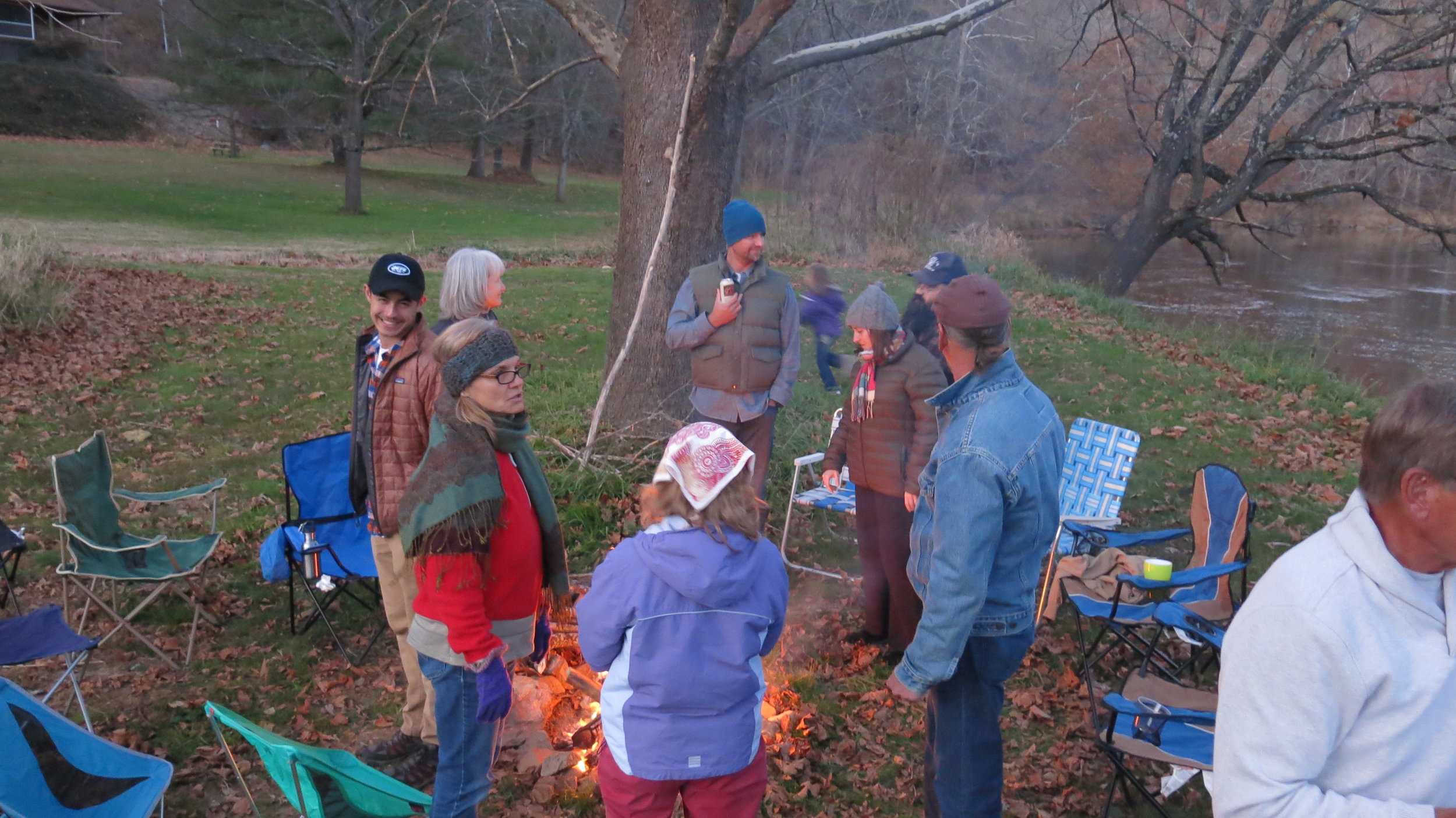

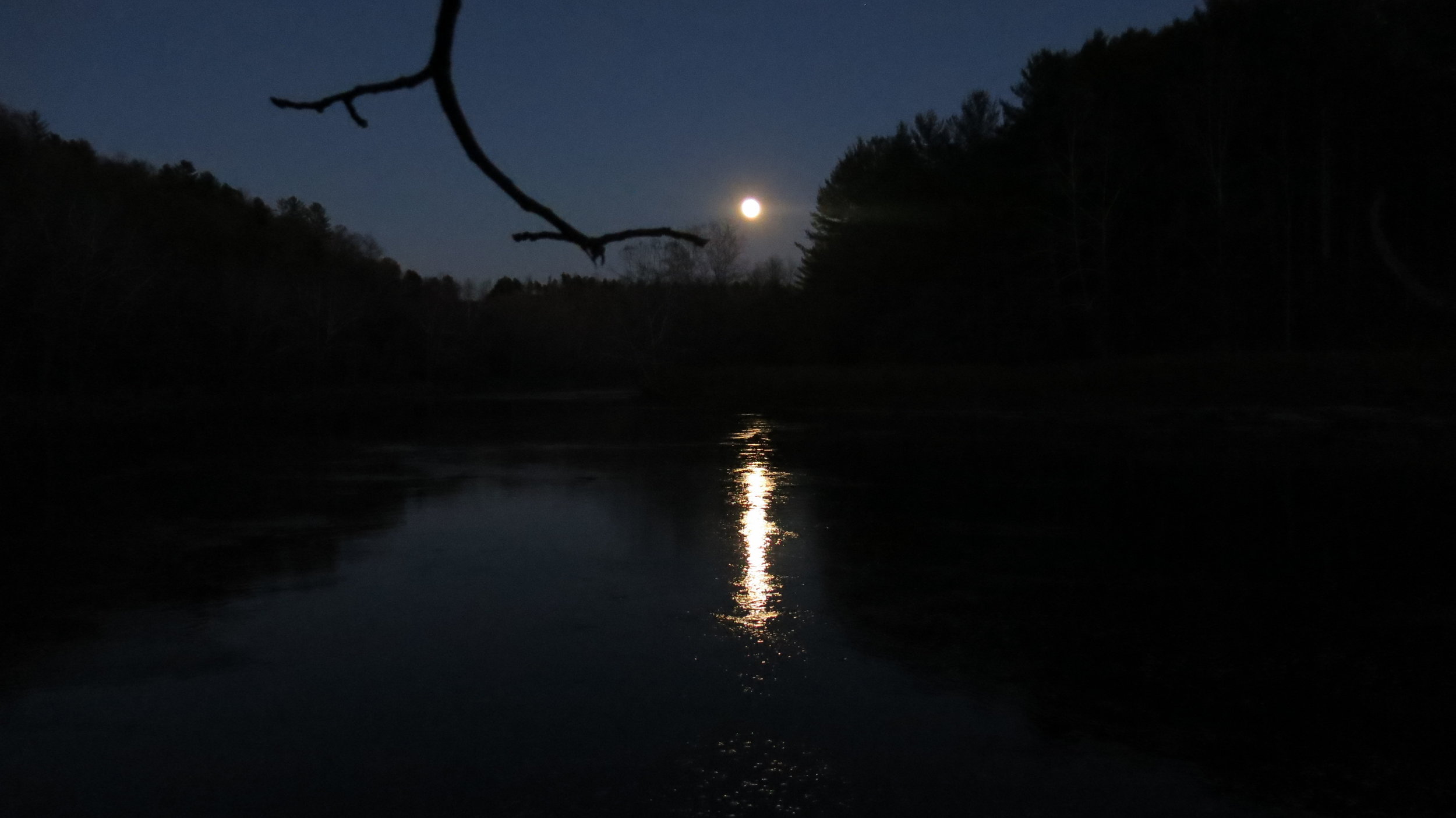
View the Super Moon Rise
Join us to watch the Super Moon rise over the New River! Sunday, November 13, 2016
4:30pm-7:30pm. Bring a chair, flashlight, binoculars, drinks, and a finger food to share.
Join us to watch the Super Moon rise over the New River!
Sunday, November 13, 2016
4:30pm 7:30pm
LOCATION: 3760 Riverside Drive, riverfront property of Carol Broderson.
DIRECTIONS: From Independence, turn left on 274/94 toward Fries. After 3.5 miles, on right, you will see river, waterfront lot for sale, bamboo, concrete drive, then turn into gravel pull-off on the right and go through gate, across dry stream, past garden to riverfront on right. If you are coming down Riverside, continue past Pine Mountain Road, go down curvy hill and look for gravel pull-off on left after zebra stripe warning signs on the right.
WHAT TO BRING: Everything you need -- chair, flashlight, binoculars, drinks, + a finger food to share.
email cynthia@blueridgediscoverycenter.org for more information
Explorers Club Hike to Cascade Falls
13 Explorers hiked to Cascade Falls in Giles County last Saturday. It started out a cold, misty morning, but quickly warmed as the group made their way up the trail following Big Stony Creek over many rock steps and bridges. There were a great many cascades to explore along the way, and a beautiful display of fall color overhead. Along the way, the group collected a variety of leaves for later identification.
13 Explorers hiked to Cascade Falls in Giles County last Saturday. It started out a cold, misty morning, but quickly warmed as the group made their way up the trail following Big Stony Creek over many rock steps and bridges. There were a great many cascades to explore along the way, and a beautiful display of fall color overhead. Along the way, the group collected a variety of leaves for later identification.
















Near the falls, the sun began to peek over the ridge and fill the valley with glowing colors reflecting off the trees and water. Everyone agreed this is one of the best waterfalls in the east.
After returning to the trailhead, folks gathered around a flat rock to identify the leaves collected along the trail, which included American beech, basswood, black oak, black walnut, chestnut oak, hickory, lady fern, marginal wood fern, pipevine, red maple, red oak, sassafras, striped maple, sugar maple, sycamore, tulip poplar, white oak, and witch hazel.
Special thanks to BRDC volunteer Bonnie Hamilton for leading this trip.
Explorers Club travels to Grandfather Mountain Hawk Watch
Aiming for peak broad-winged hawk migration, the explorers club hit the road to visit Grandfather Mountain Hawk Watch. We arrived not a minute too early! As we were setting up shop on Linville Peak (across the swinging bridge), kettles began to form to the southeast. It was if the hawks were appearing out of thin air, rising from the forest canopy below. We had incredible views looking nearly directly down on the birds. They were taking advantage of the thermals forming on the southeast facing slope of the mountain and soaring right in front of us. They circled up and up in kettles of thirty or more birds until they reached cruising altitude and one by one they would peel off continue their journey south toward Central and South America.
Aiming for peak broad-winged hawk migration, the explorers club hit the road to visit Grandfather Mountain Hawk Watch. We arrived not a minute too early! As we were setting up shop on Linville Peak (across the swinging bridge), kettles began to form to the southeast. It was if the hawks were appearing out of thin air, rising from the forest canopy below. We had incredible views looking nearly directly down on the birds. They were taking advantage of the thermals forming on the southeast facing slope of the mountain and soaring right in front of us. They circled up and up in kettles of thirty or more birds until they reached cruising altitude and one by one they would peel off continue their journey south toward Central and South America.
As the day went on the birds came through higher and higher until the only way we could spot them was if they passed in front of the lone cloud in an otherwise bluebird sky. Noon passed and the migration began to come from the northeast where we relied on spotting scopes to pick out possible migrants. All told we counted over 540 birds of prey including broad-winged hawk, peregrine falcon, american kestrel, sharp-shinned hawk, coopers hawk, red-shouldered hawk and bald eagle!
Many thanks to the executive director of Grandfather Mountain, Jesse Pope, for hosting Blue Ridge Discovery Center and giving us the opportunity to participate in the hawk count.
Explorers Club @ Peach Bottom Falls
Imagine yourself arriving at this site after a 12 hour wagon ride in the late 1700's...site of an iron furnace and forge where early pioneer tools, as well as pots and pans were cast. Later, electric power for the town of Independence was generated until 1935.
The Blue Ridge Explorers Club visited the falls and discovered stoneflies and caddisflies under rocks in the creek, rock overhangs, coneflower, wingstem, an unknown species of lizard, and Cedar Waxwings swooping down to catch insects at the top of the falls.
Imagine yourself arriving at this site after a 12 hour wagon ride in the late 1700's...site of an iron furnace and forge where early pioneer tools, as well as pots and pans were cast. Later, electric power for the town of Independence was generated until 1935.
The Blue Ridge Explorers Club visited the falls and discovered stoneflies and caddisflies under rocks in the creek, coneflower, wingstem, rock overhangs perched above the stream, an unknown species of lizard, and Cedar Waxwings swooping down to catch insects at the top of the falls. The first signs of fall were evident among the hardwoods in the mixed forest of hemlock, oak, and maple. Above the top of the falls, the creek levels out into a peaceful valley with intermittent shoals and steep rock ridges.
The group had a lovely time exploring and thought the little park a great place to visit during the hot summer months when cooling off in the pools of the creek would be most welcome.
Photos by Rick Taylor
